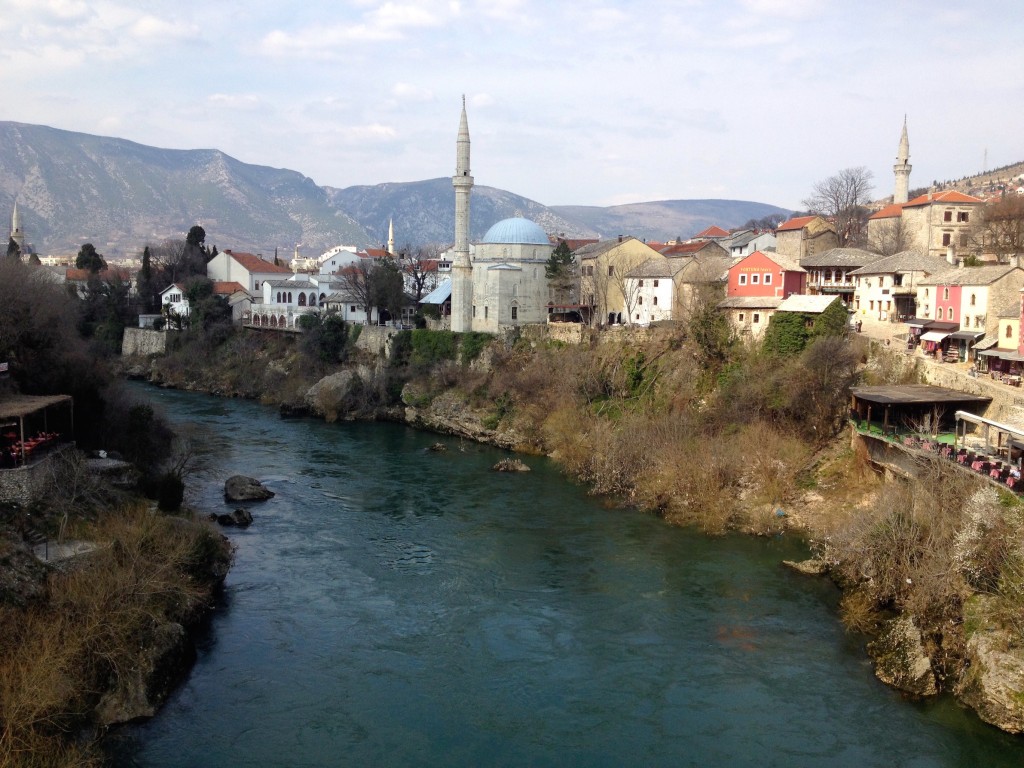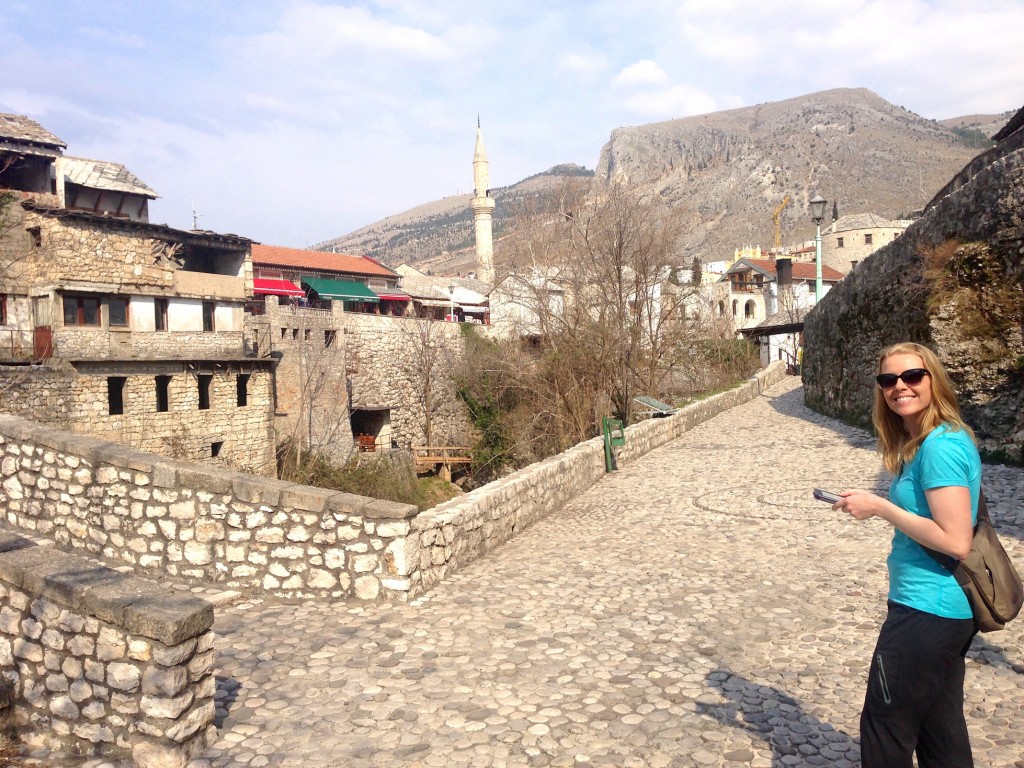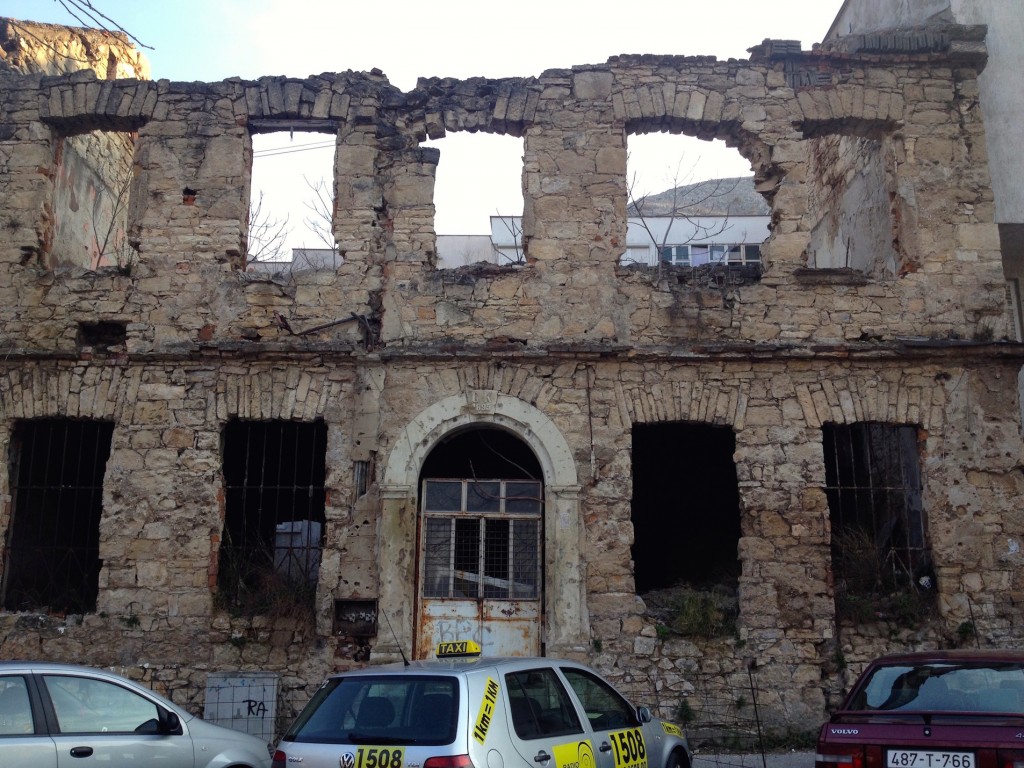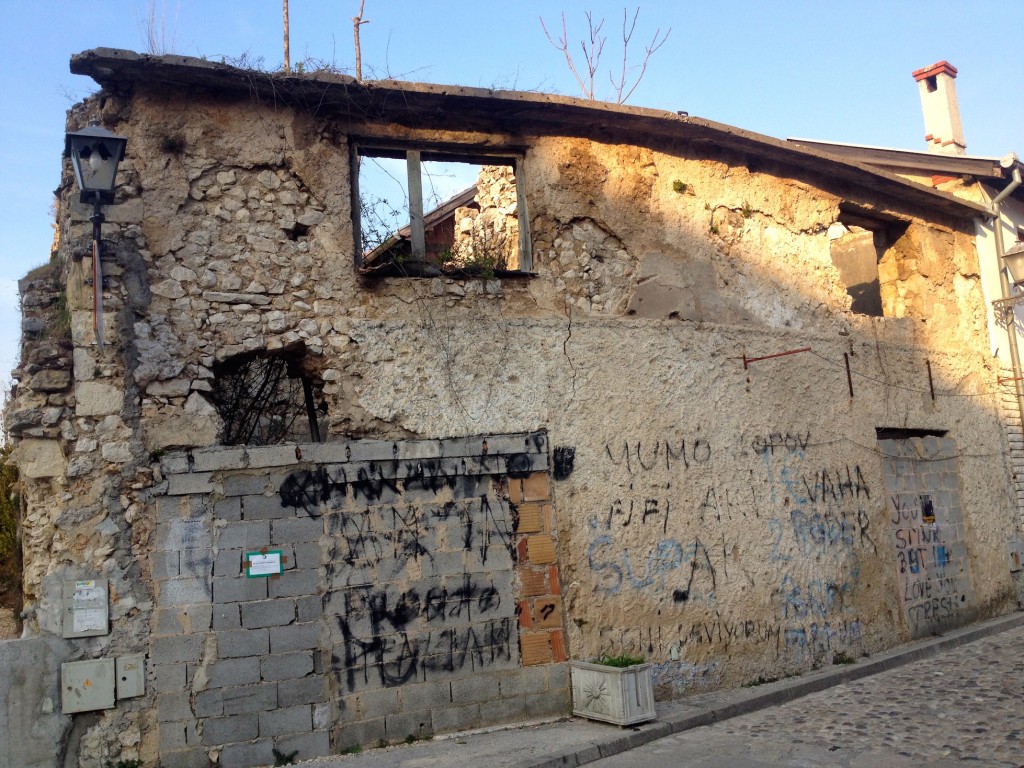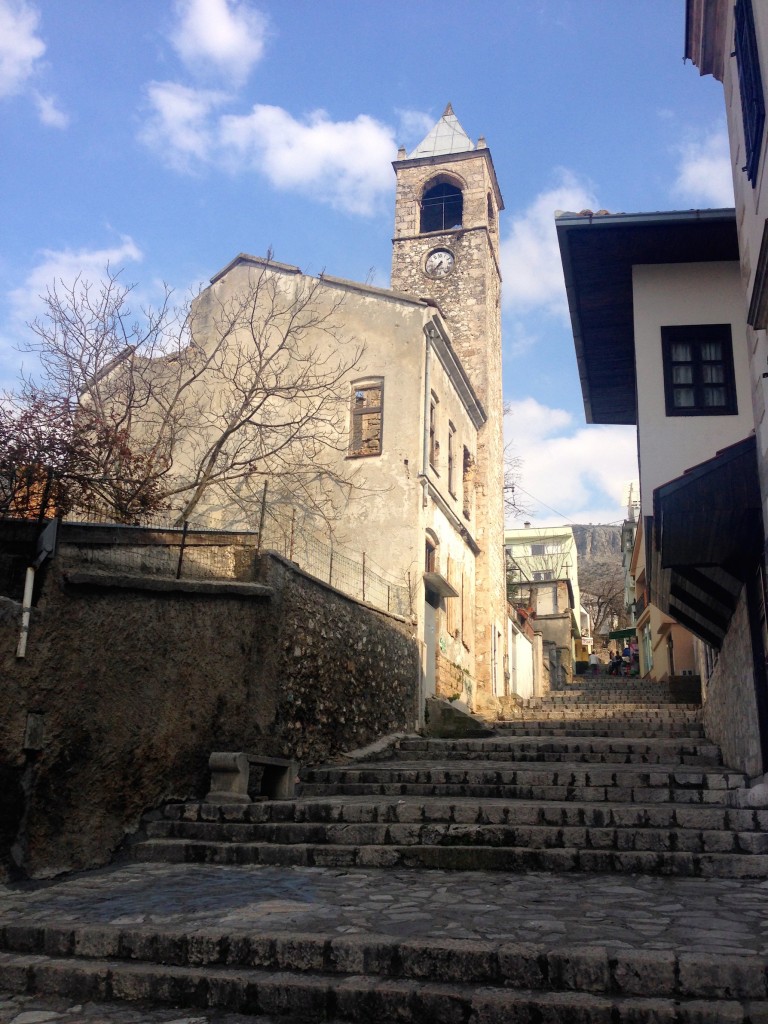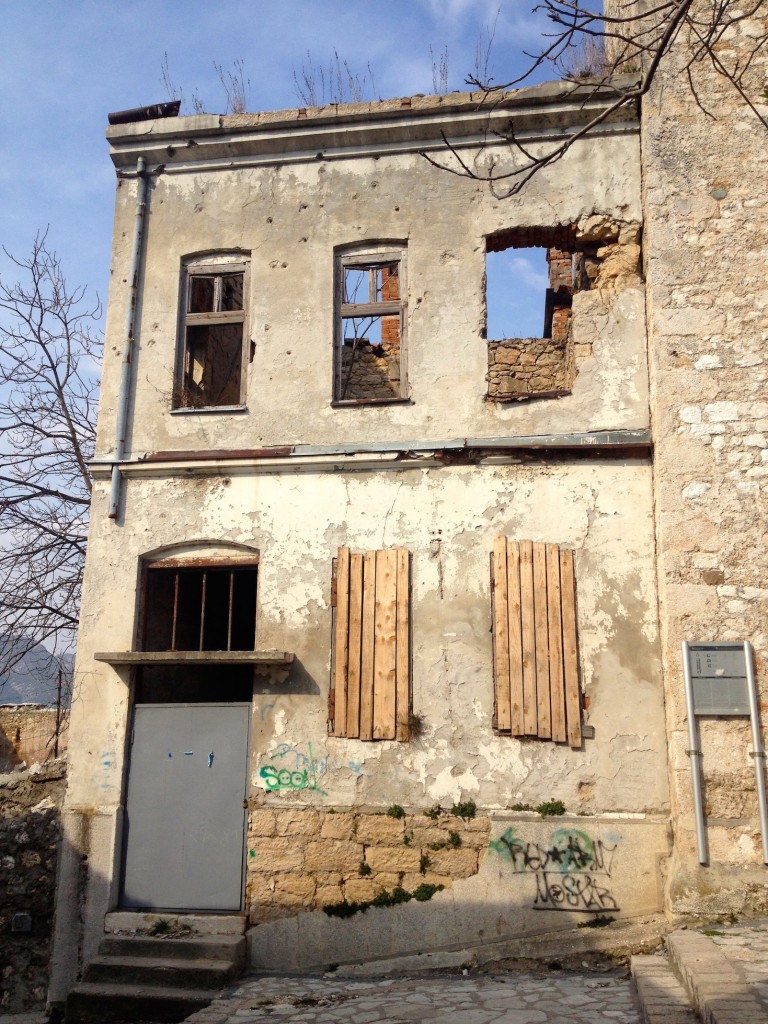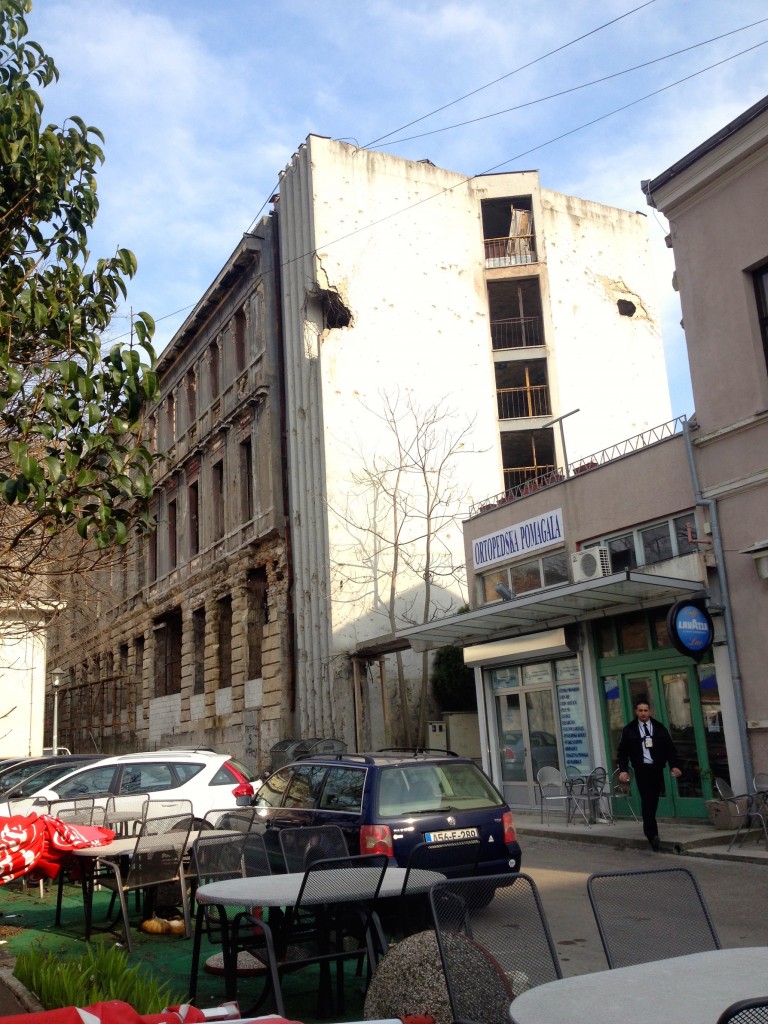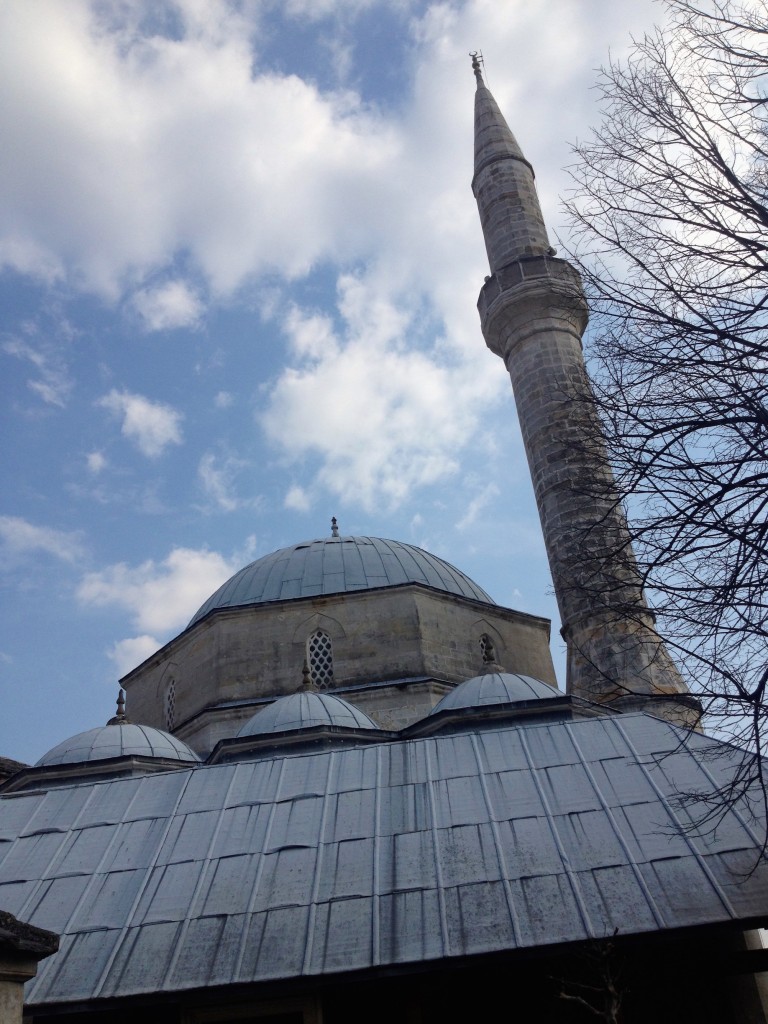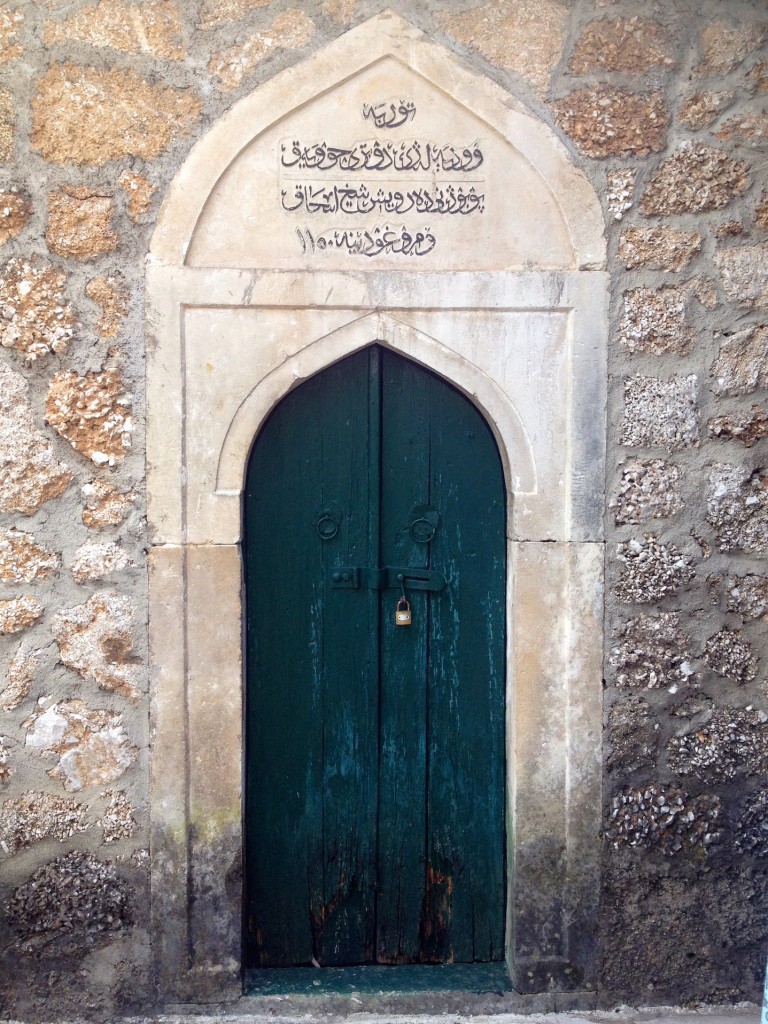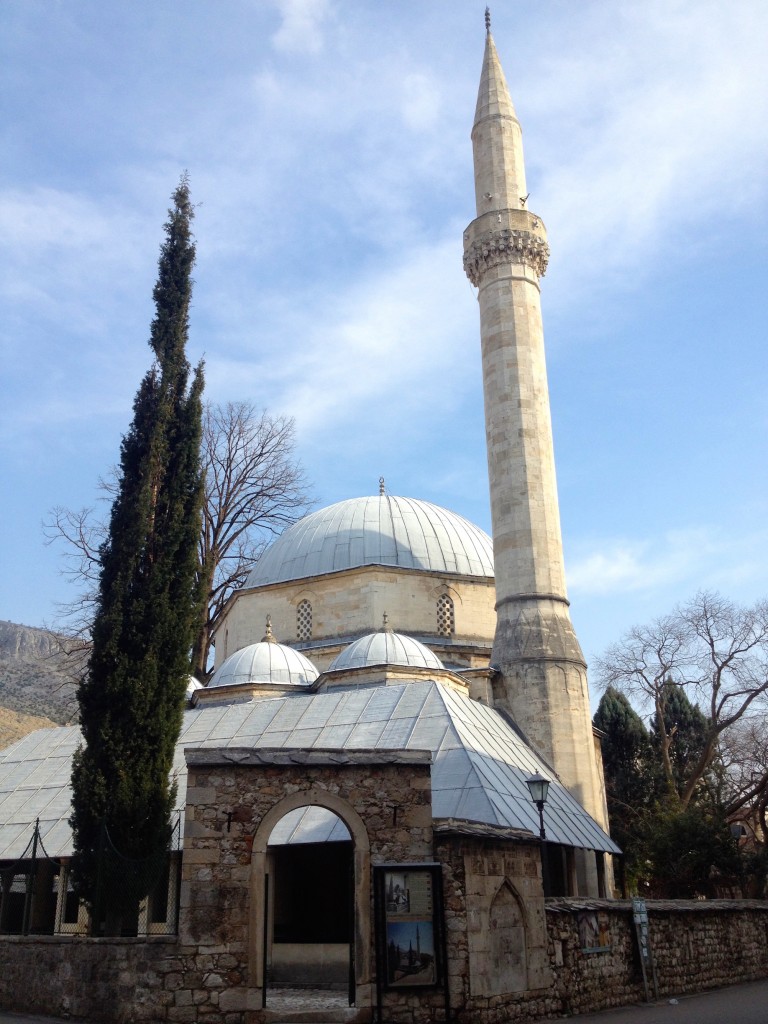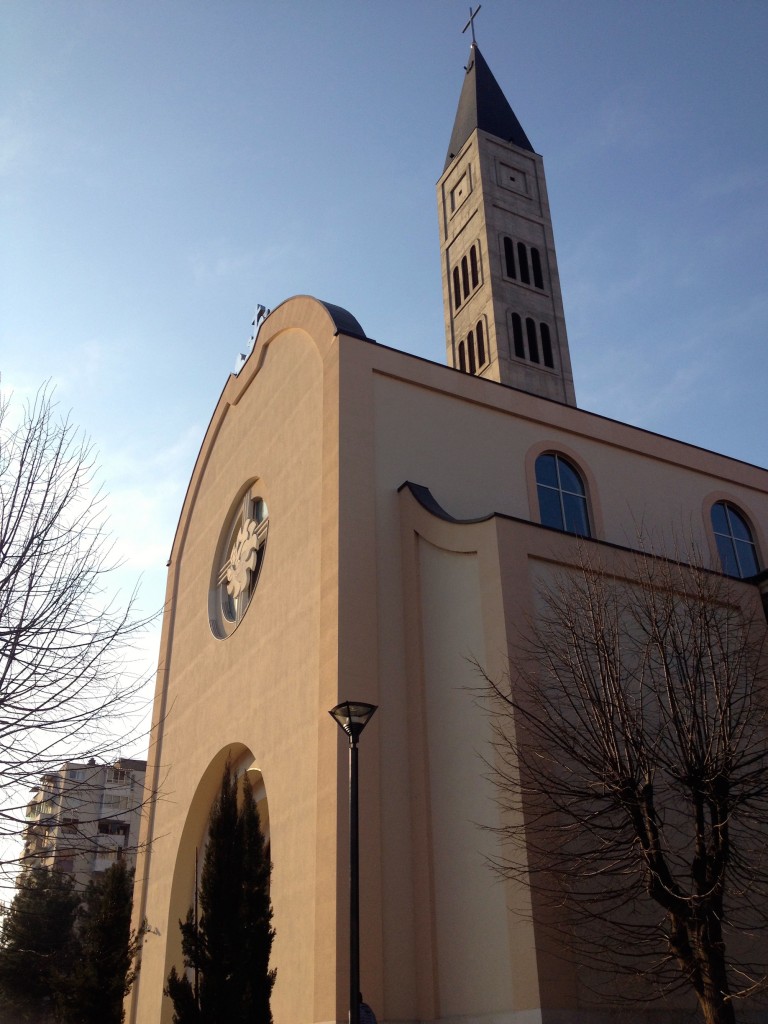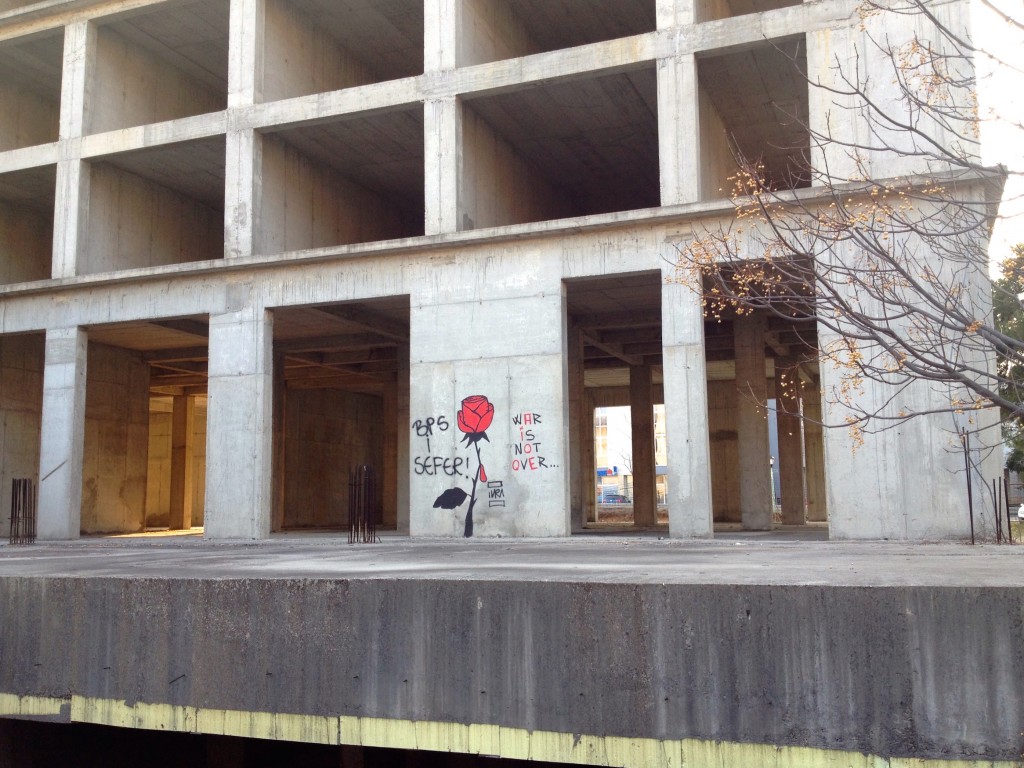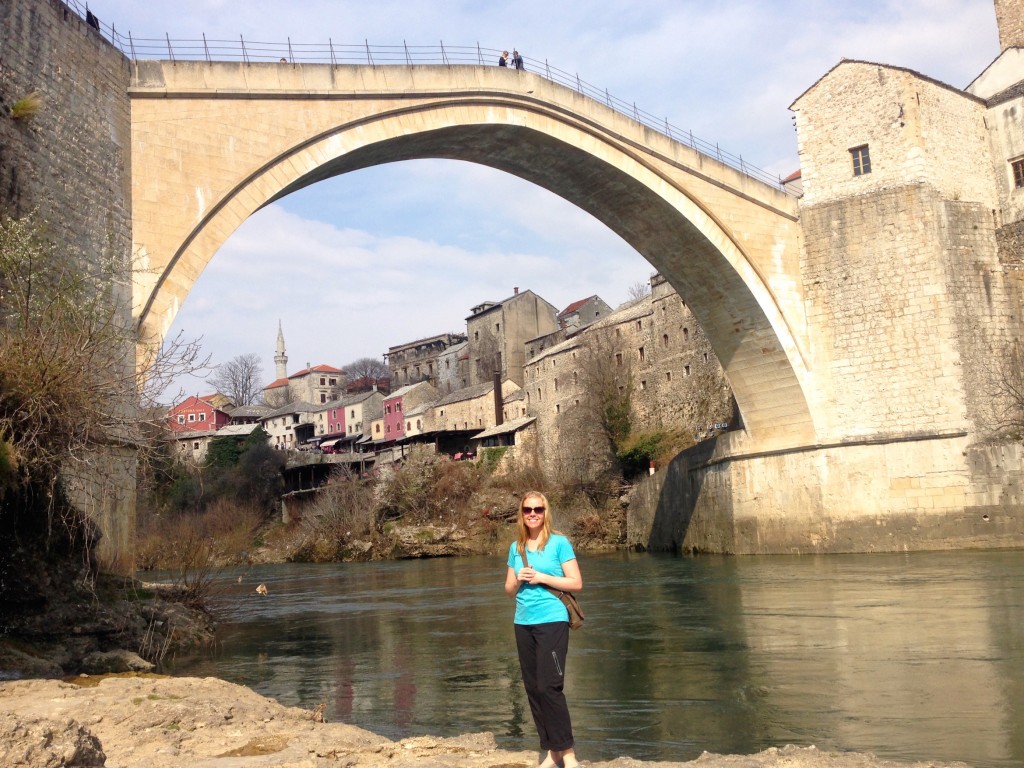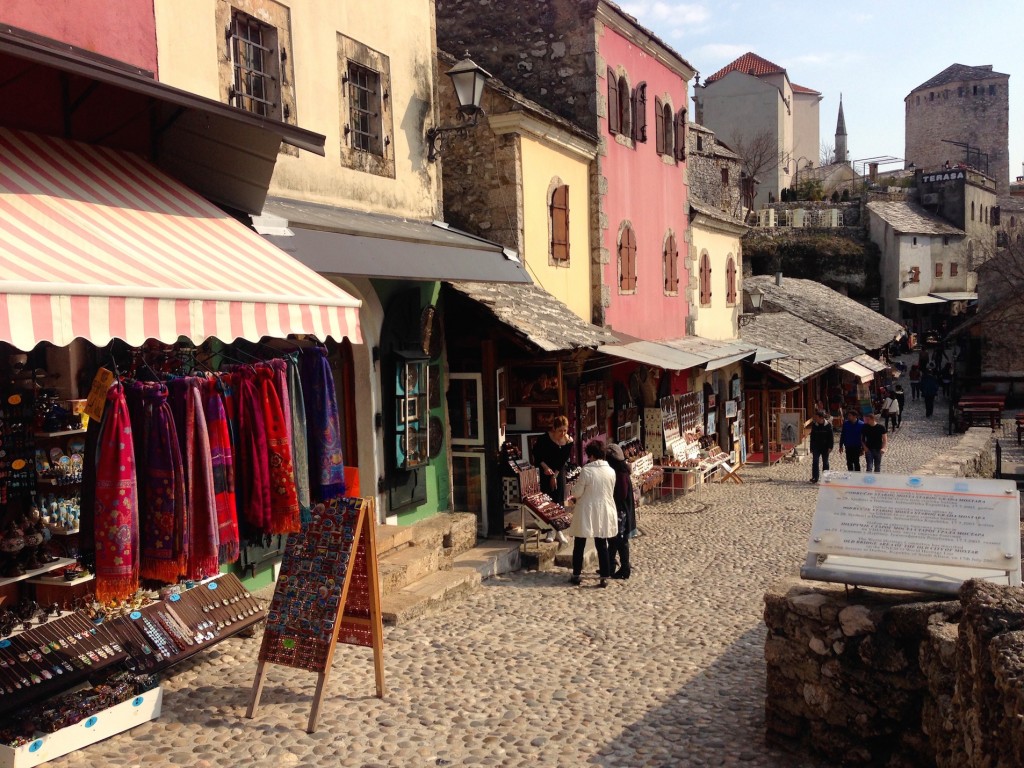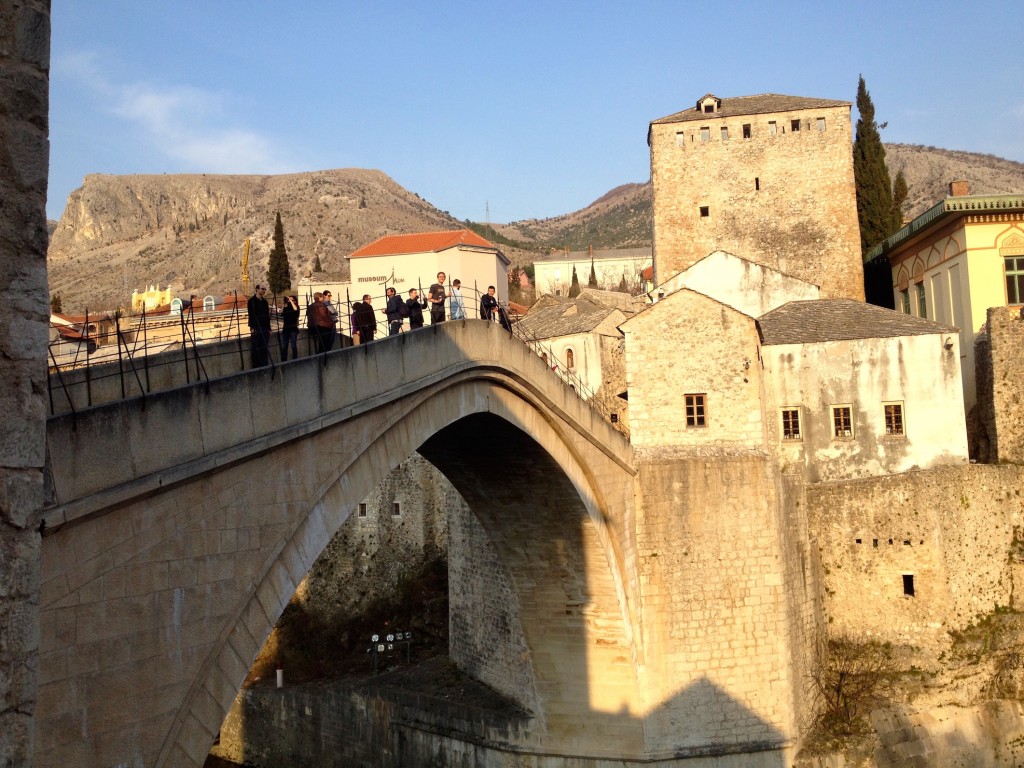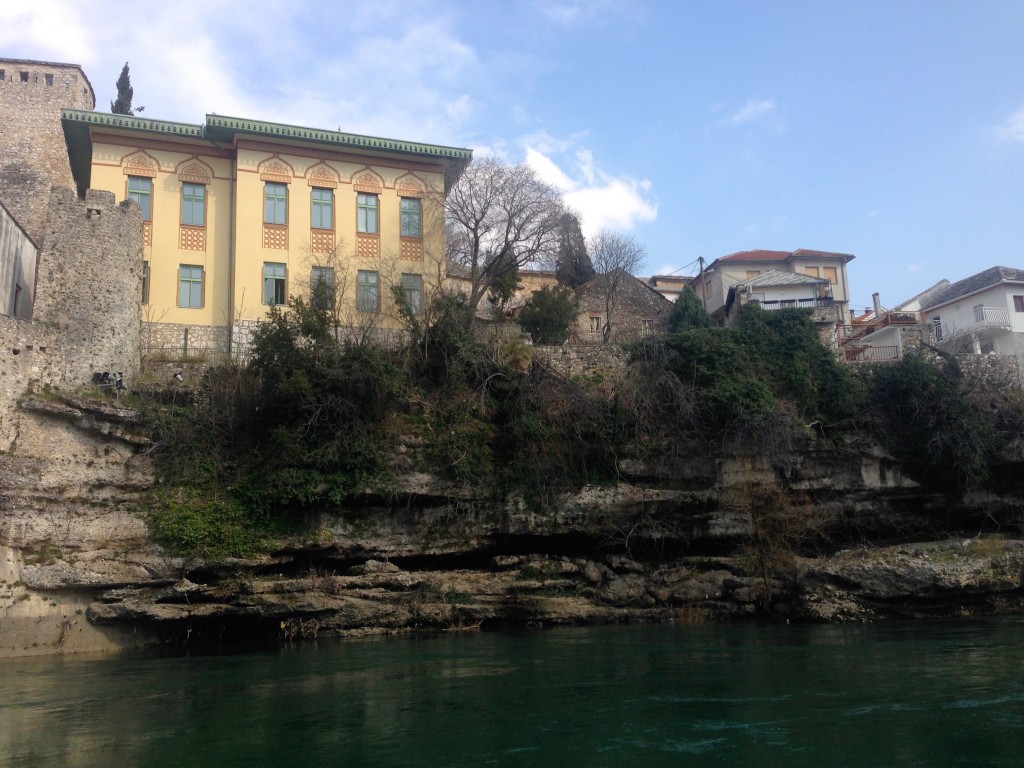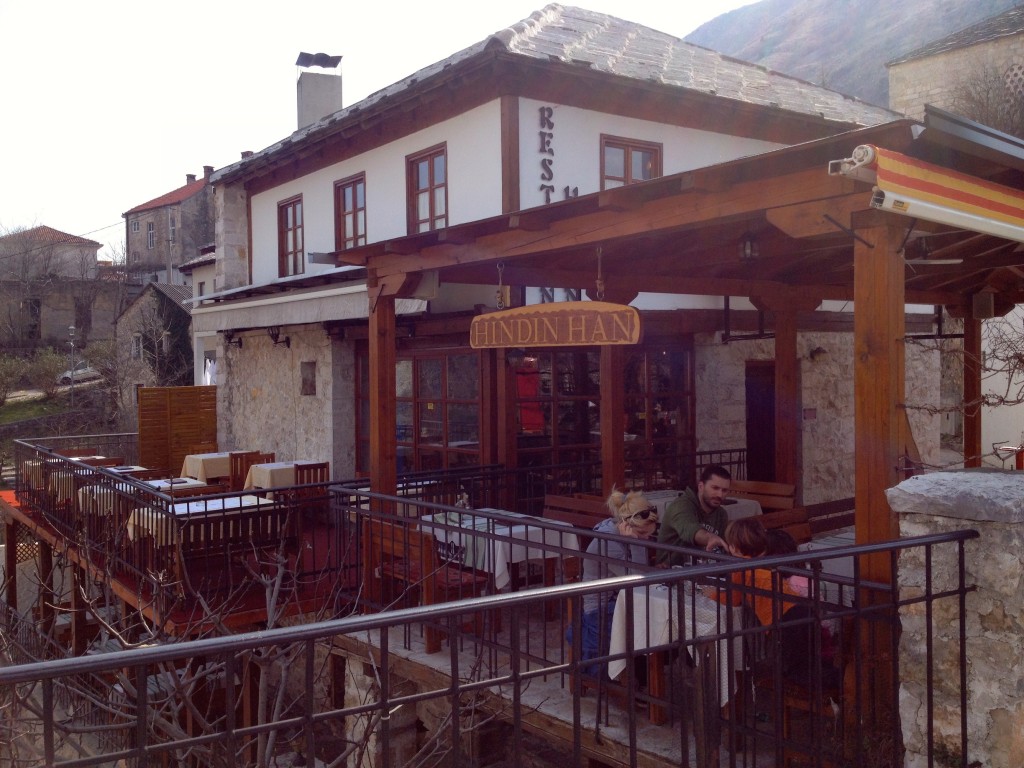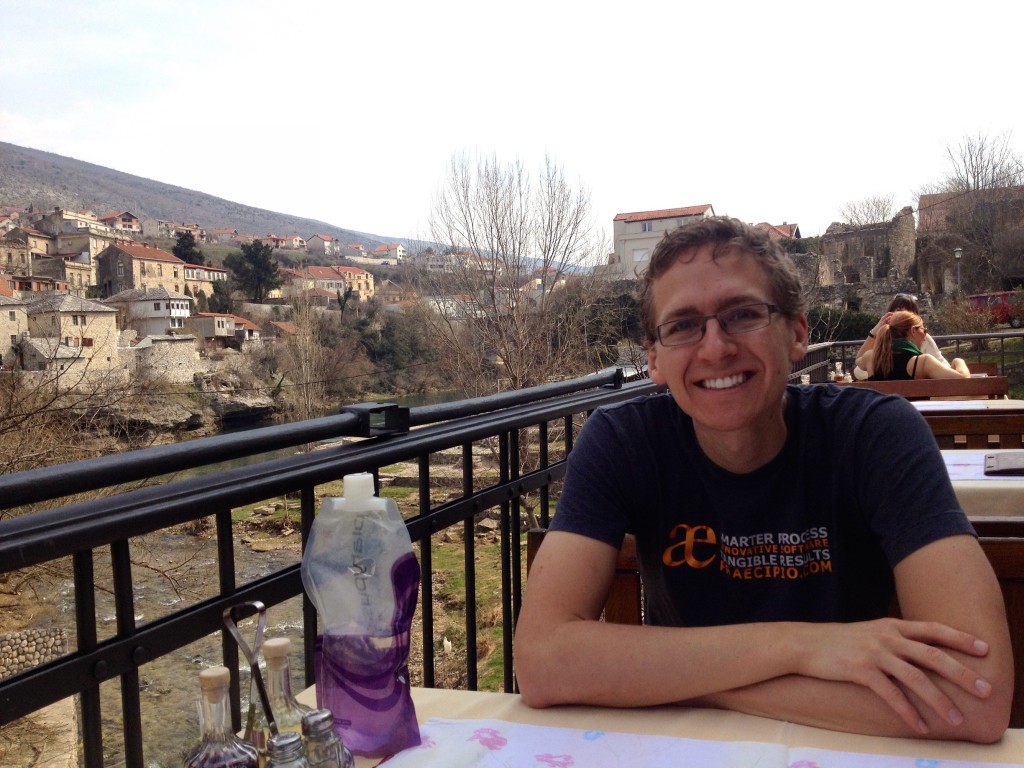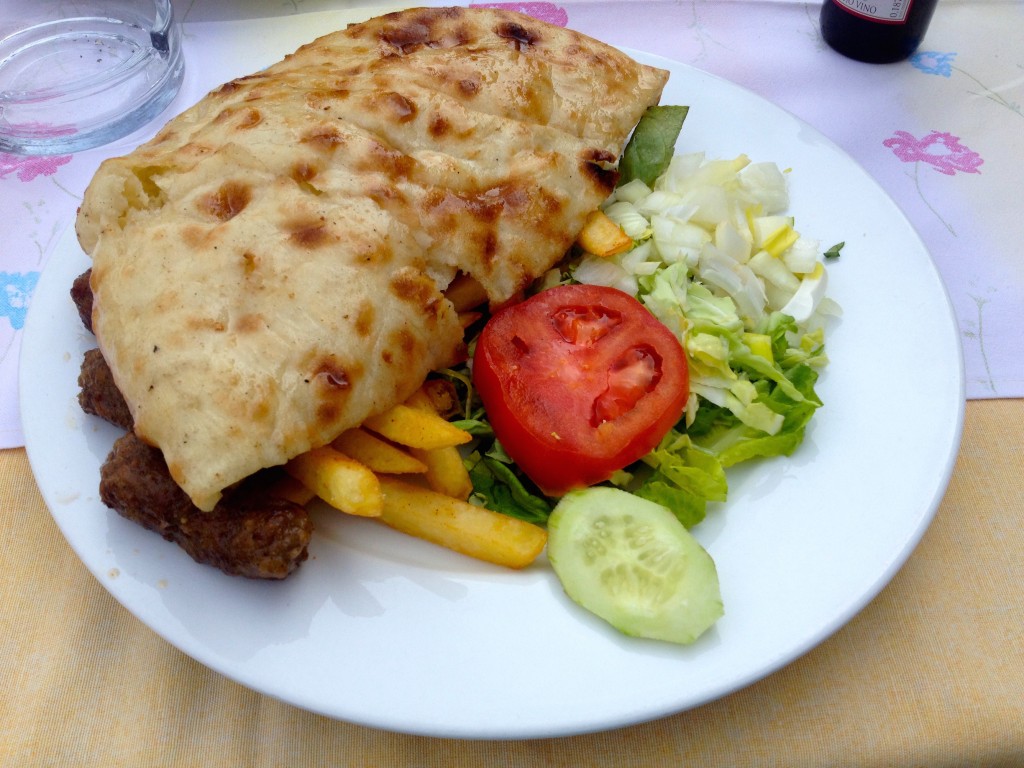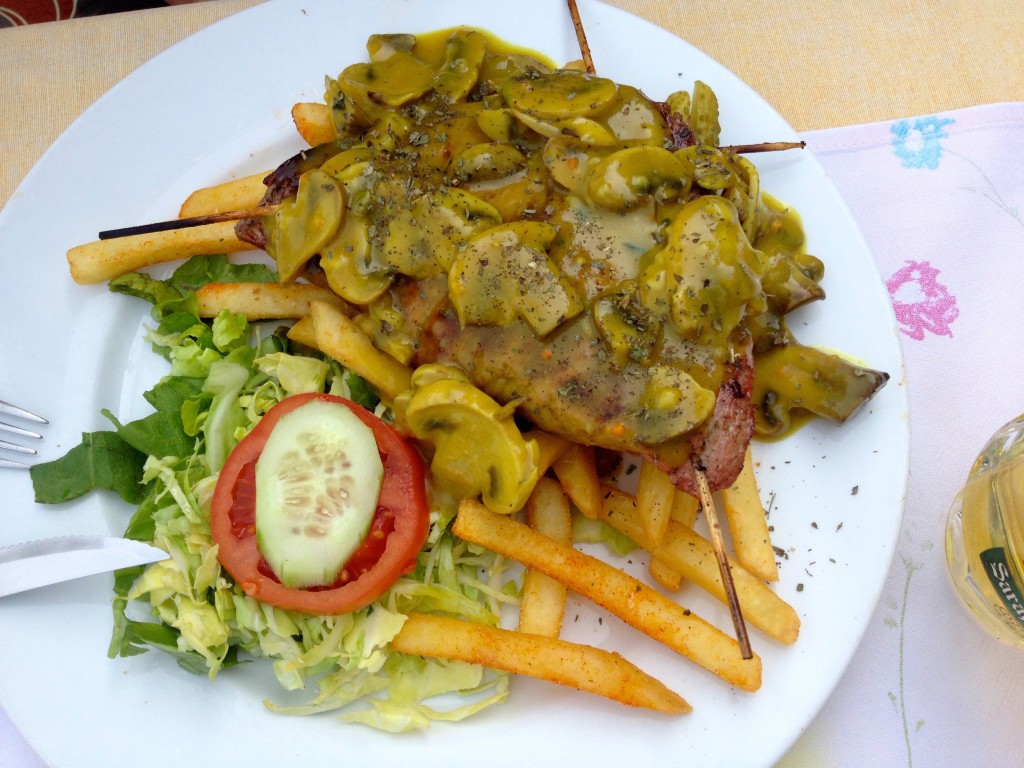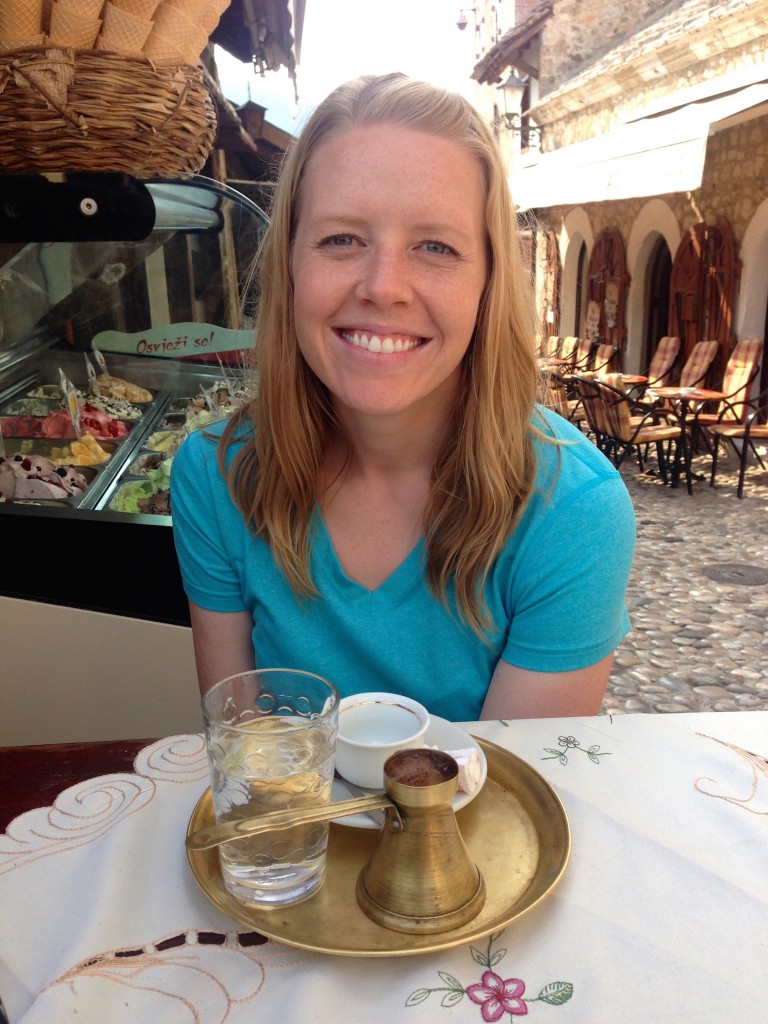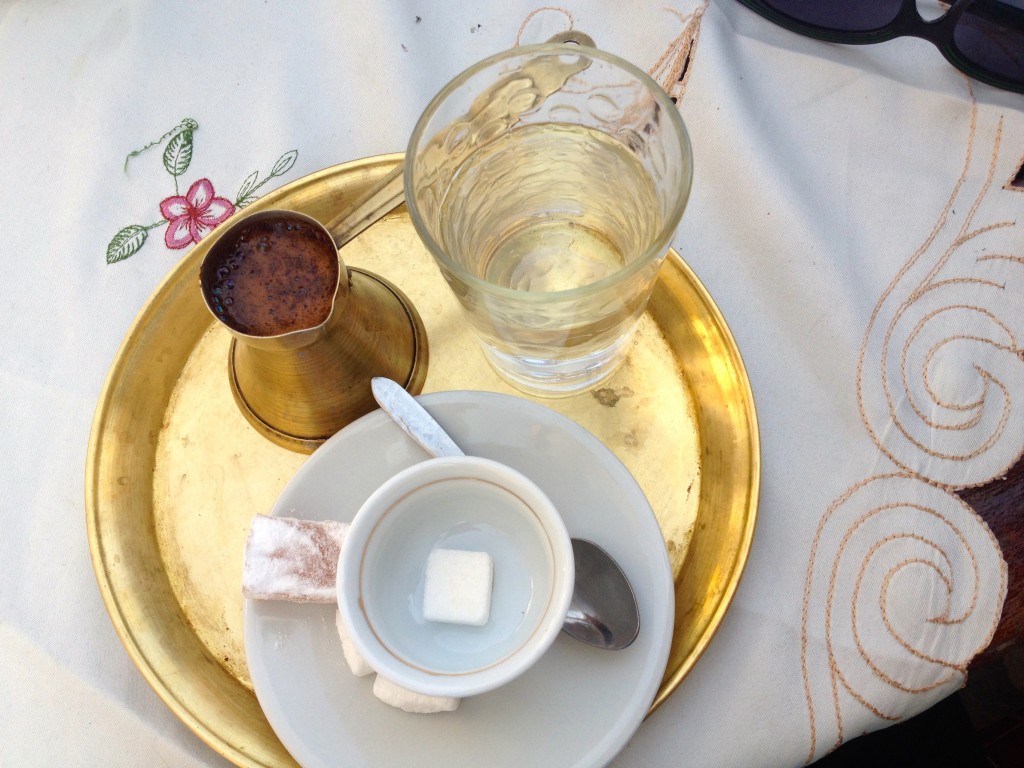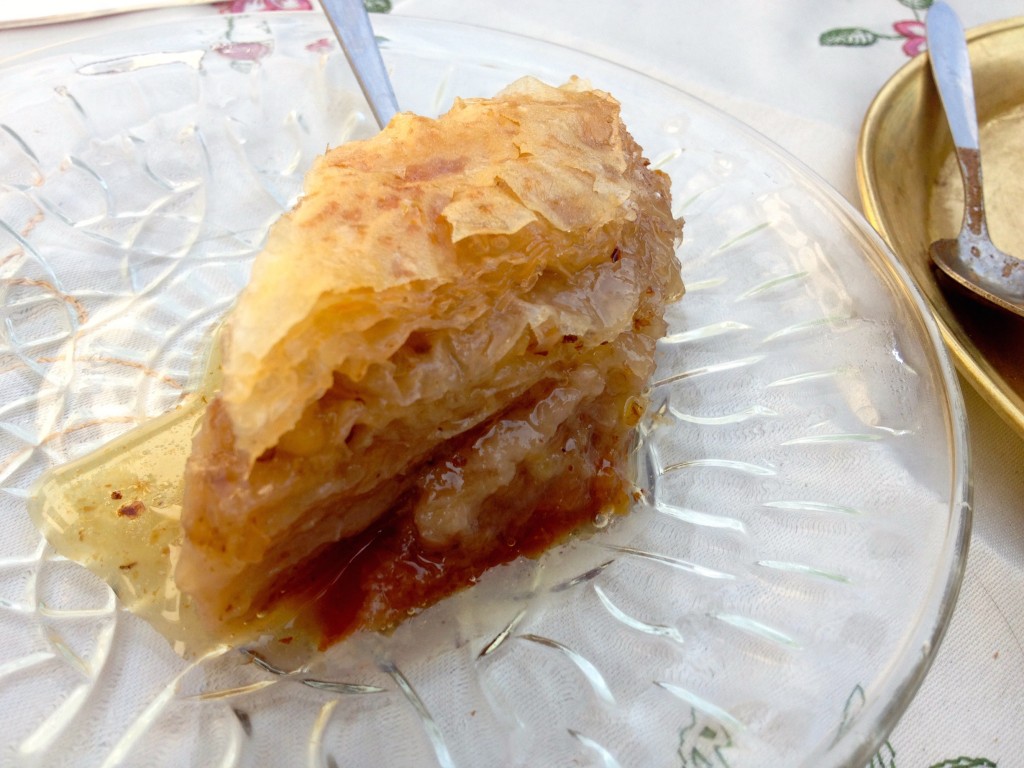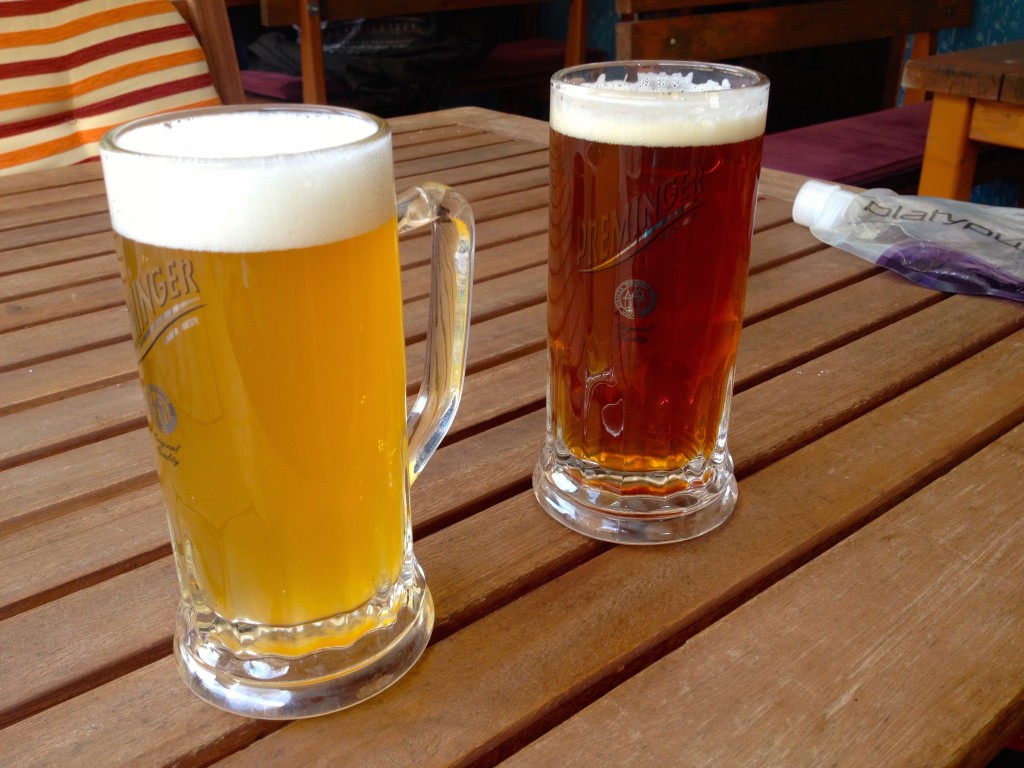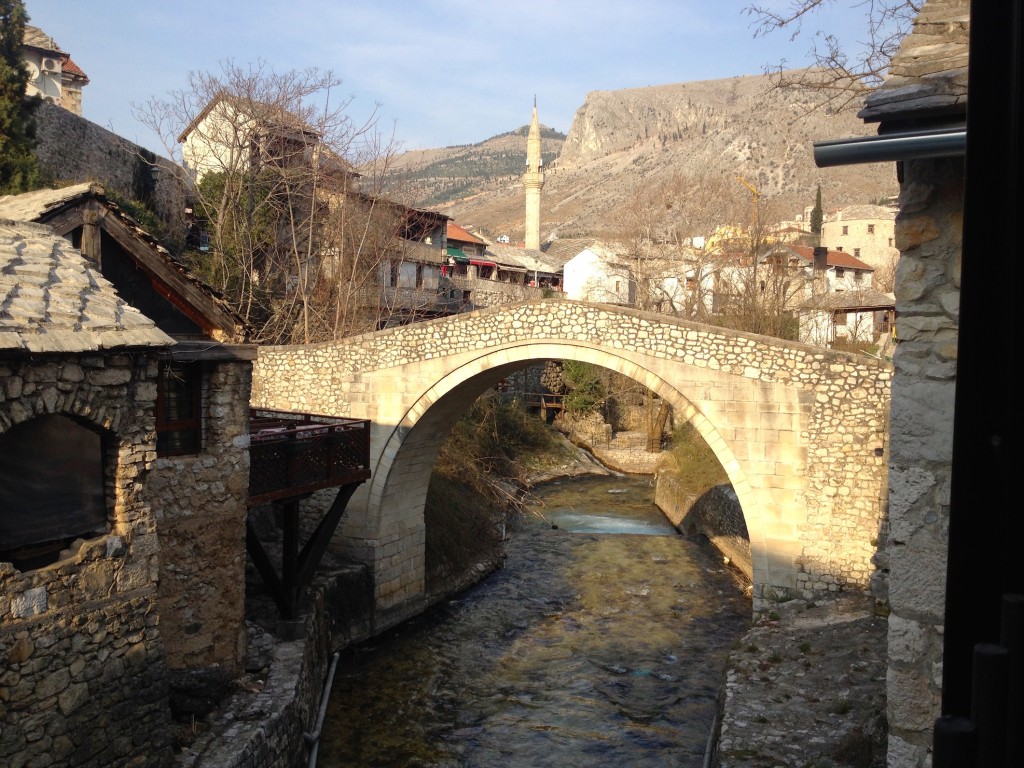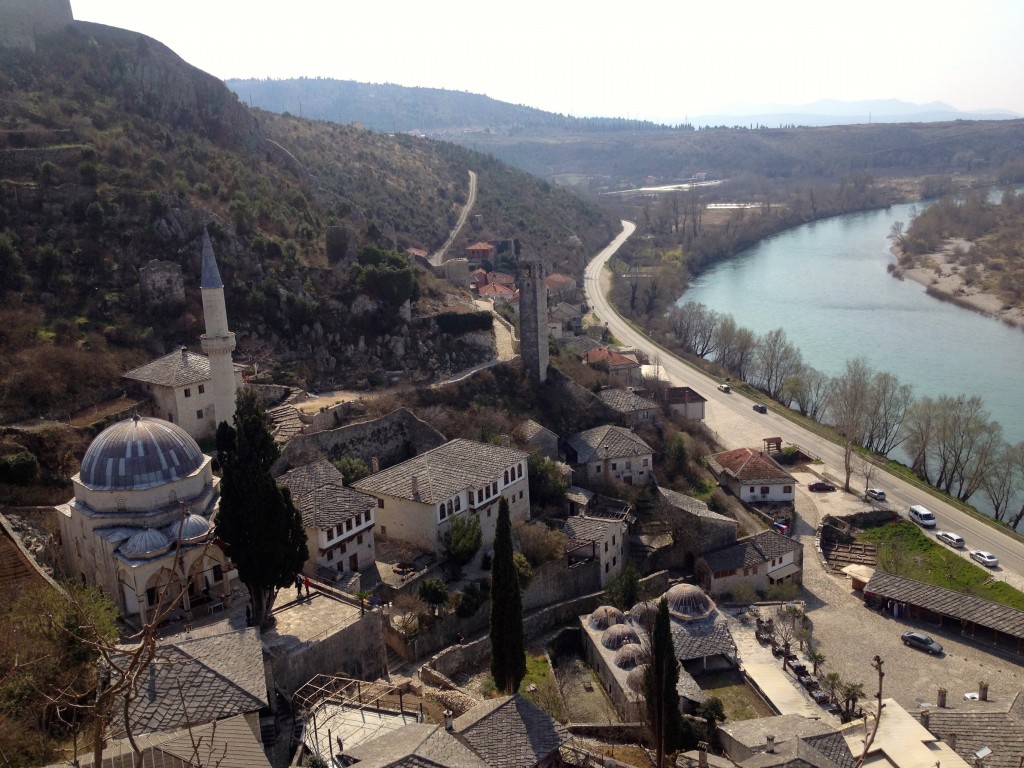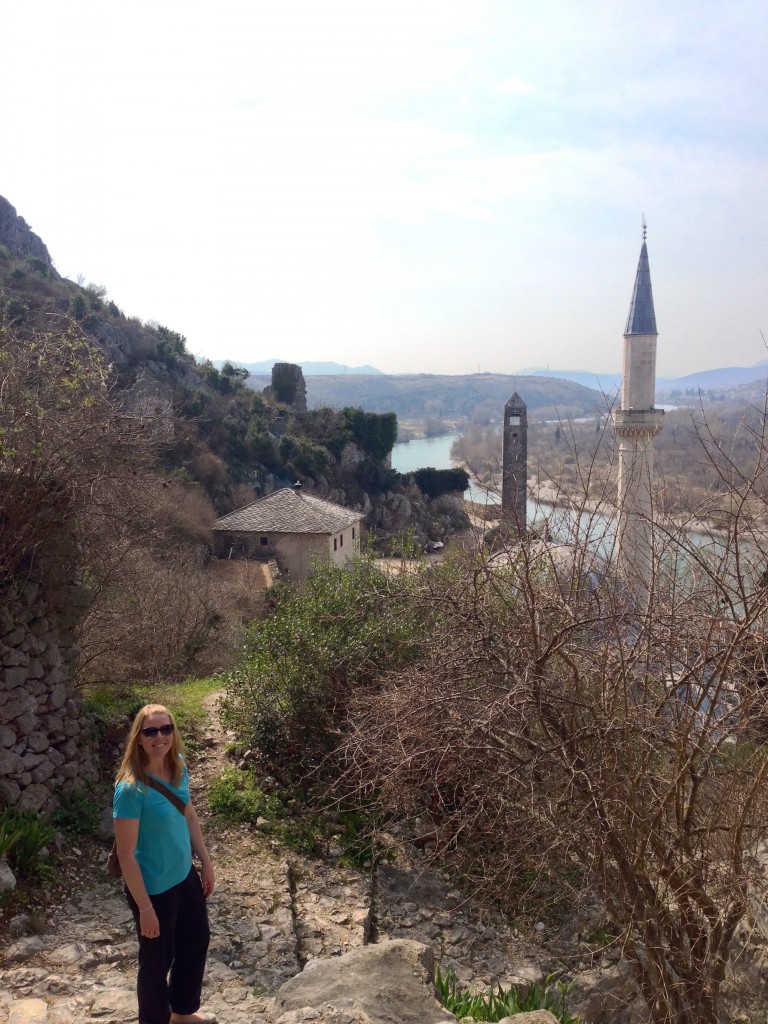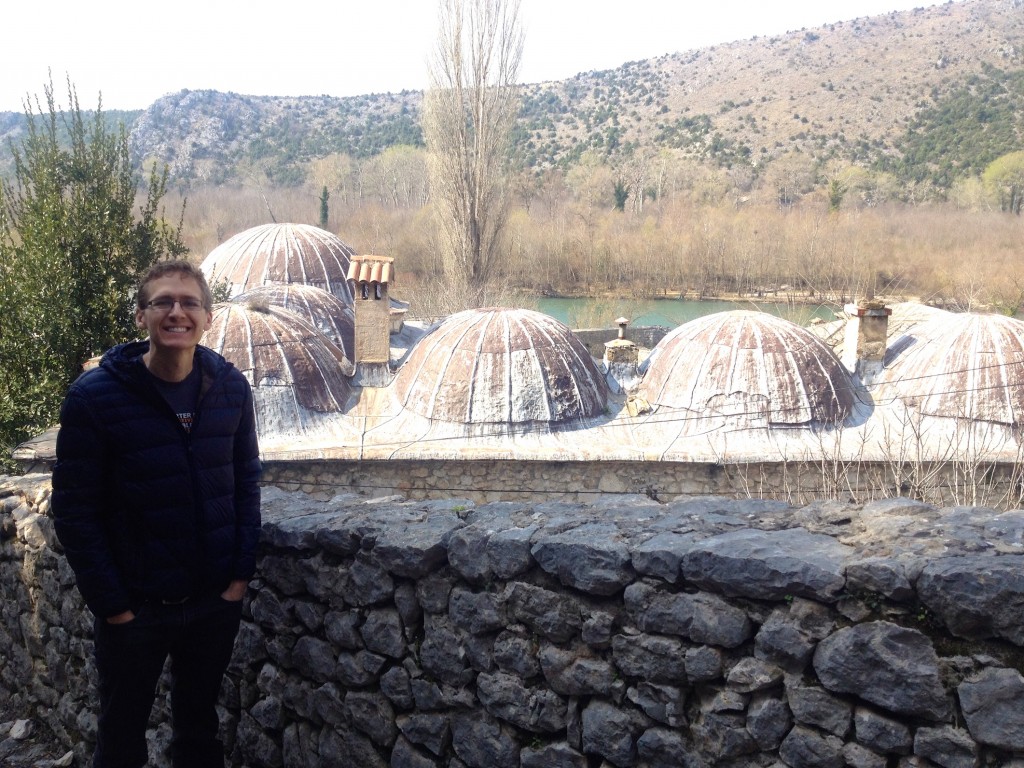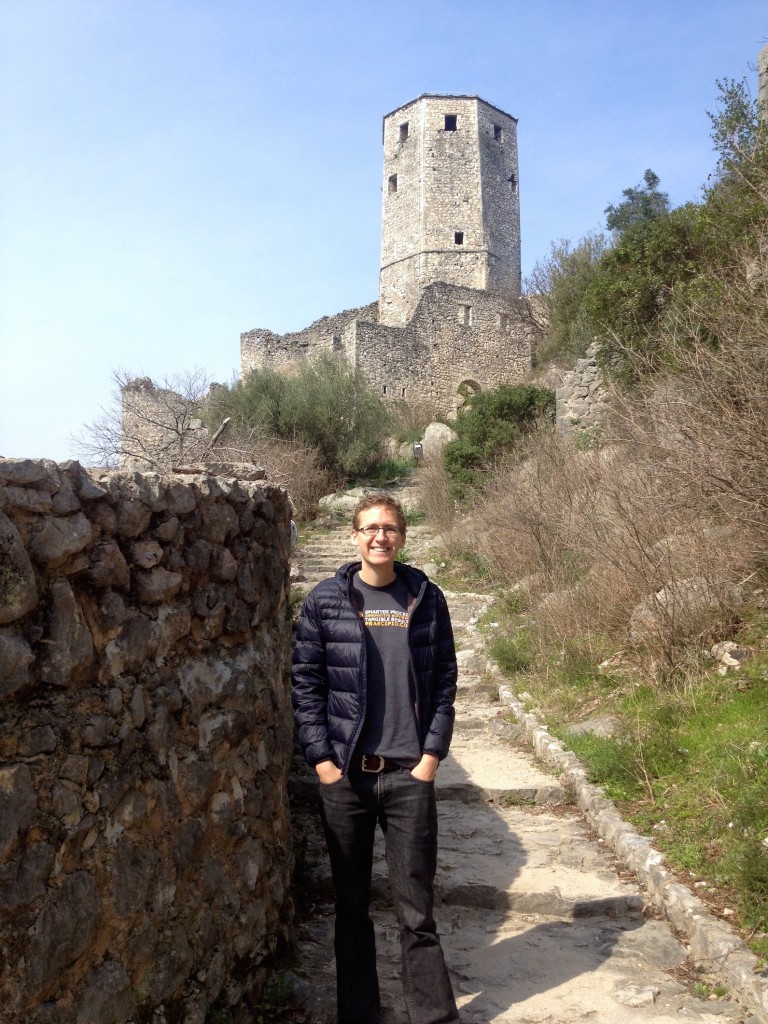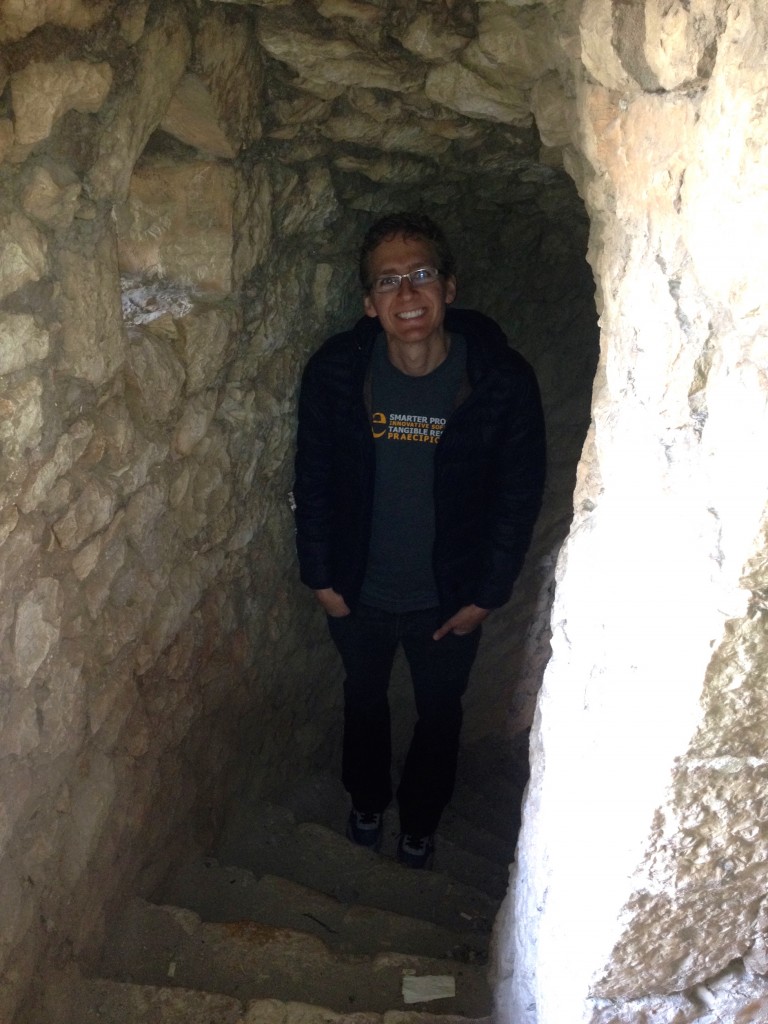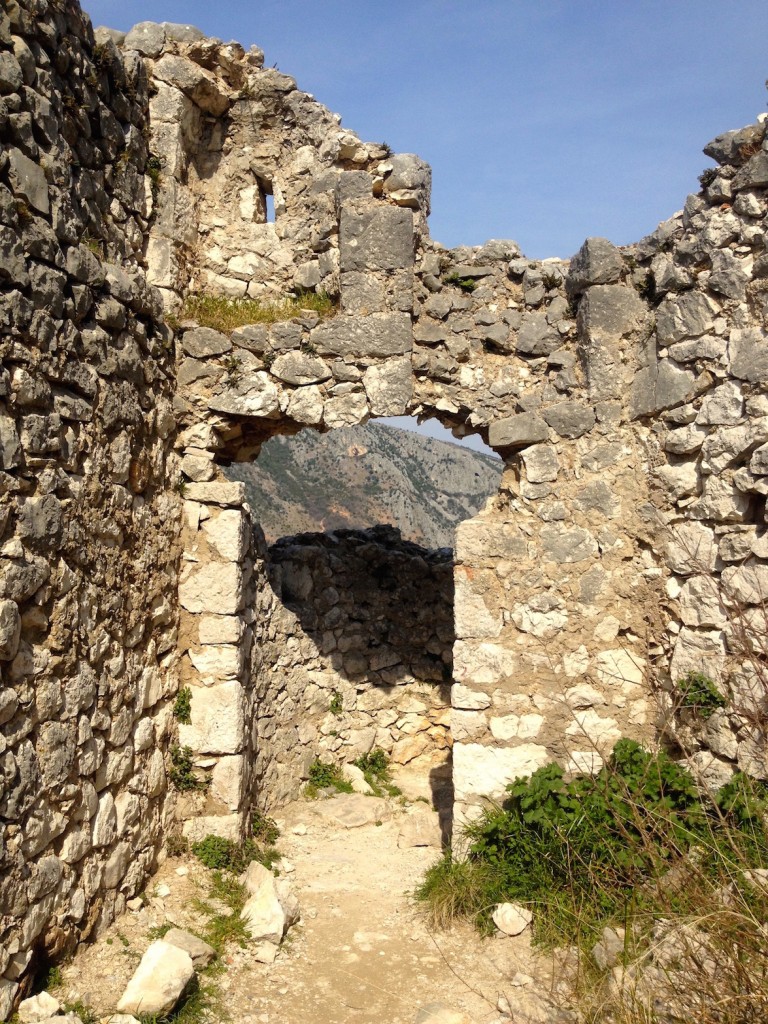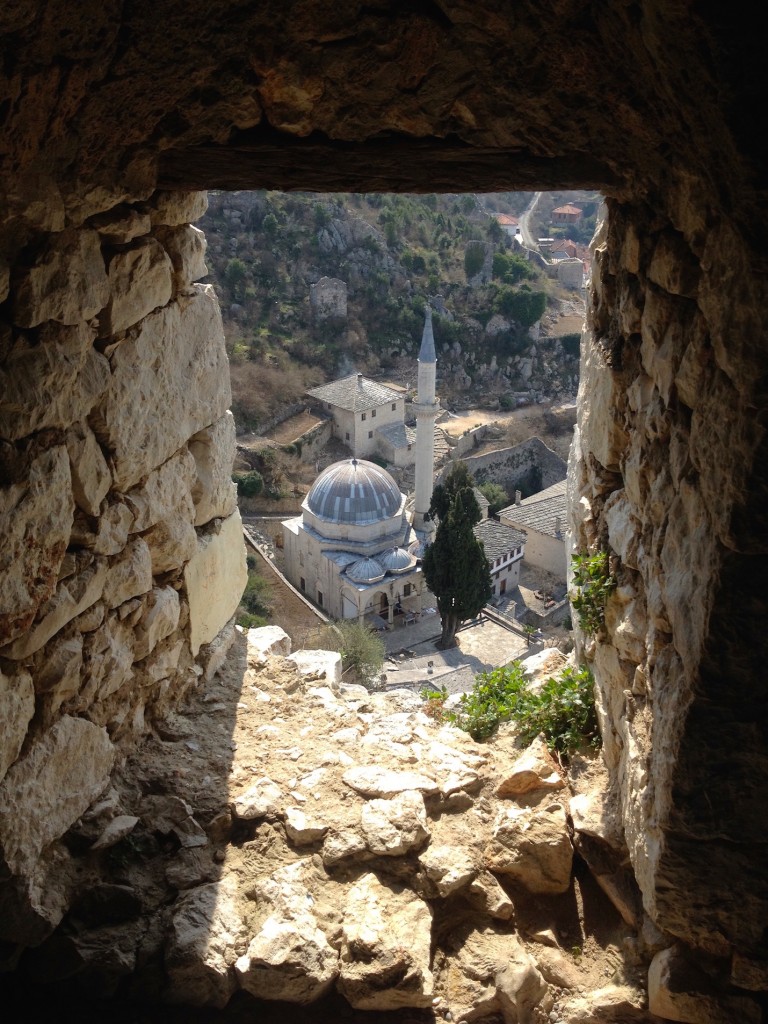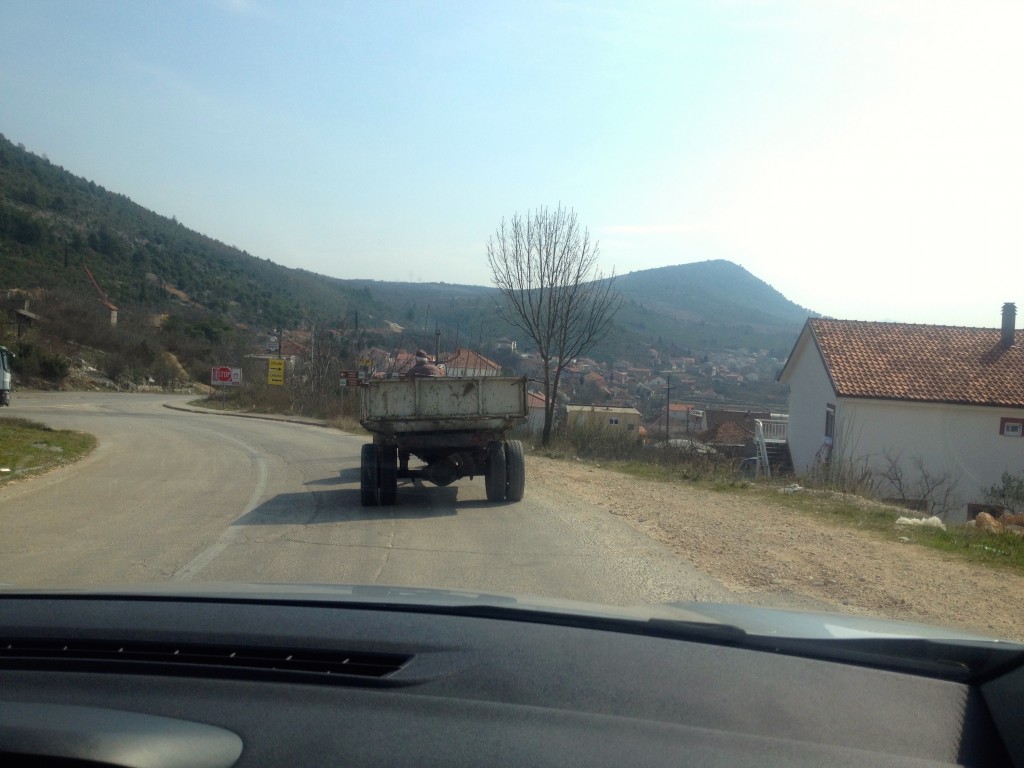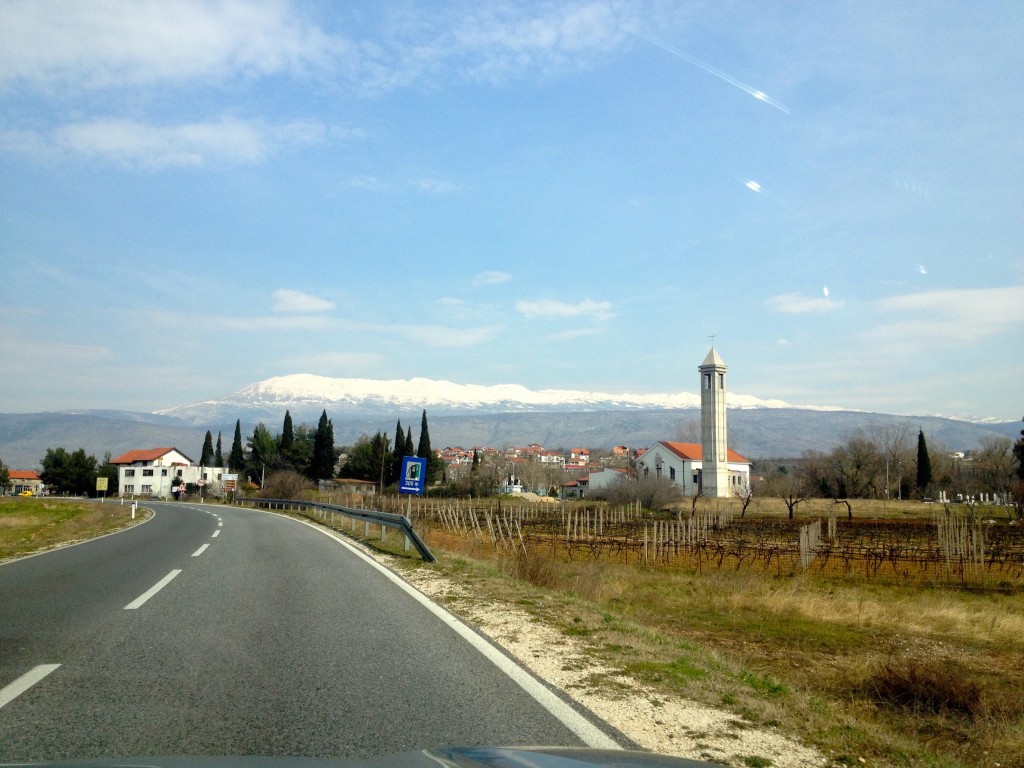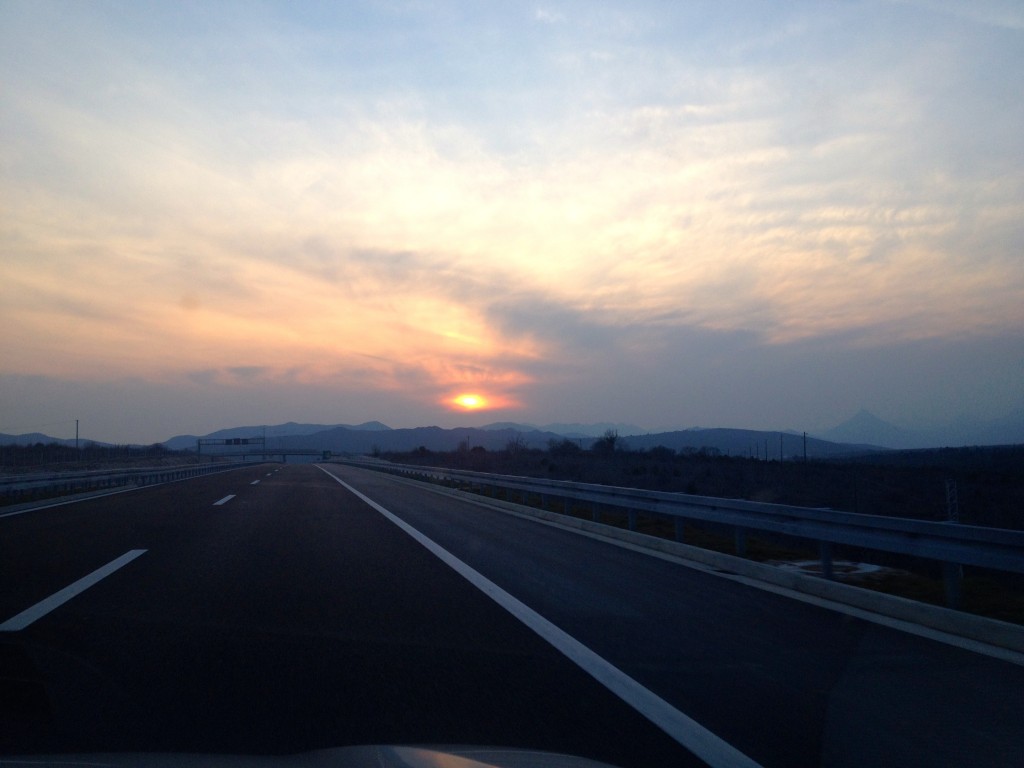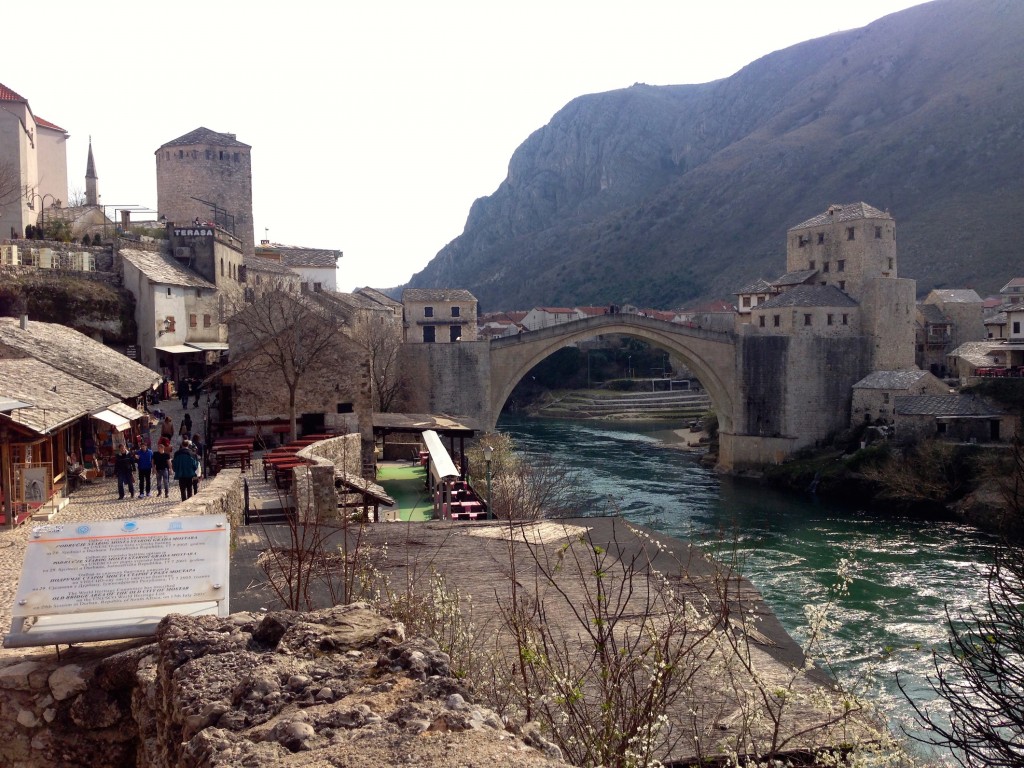One of the reasons we chose Split for our home base in Croatia is because it is the perfect launch point for tons of day trips! Last week, I posted about our day trip to Dubrovnik. This week, I’m posting about a Day Trip across the border to a country I never thought I’d ever visit – Bosnia. (While most people just call the country Bosnia for short, its full name is technically “Bosnia and Herzegovina”. I’m going to refer to it as Bosnia in this post.)
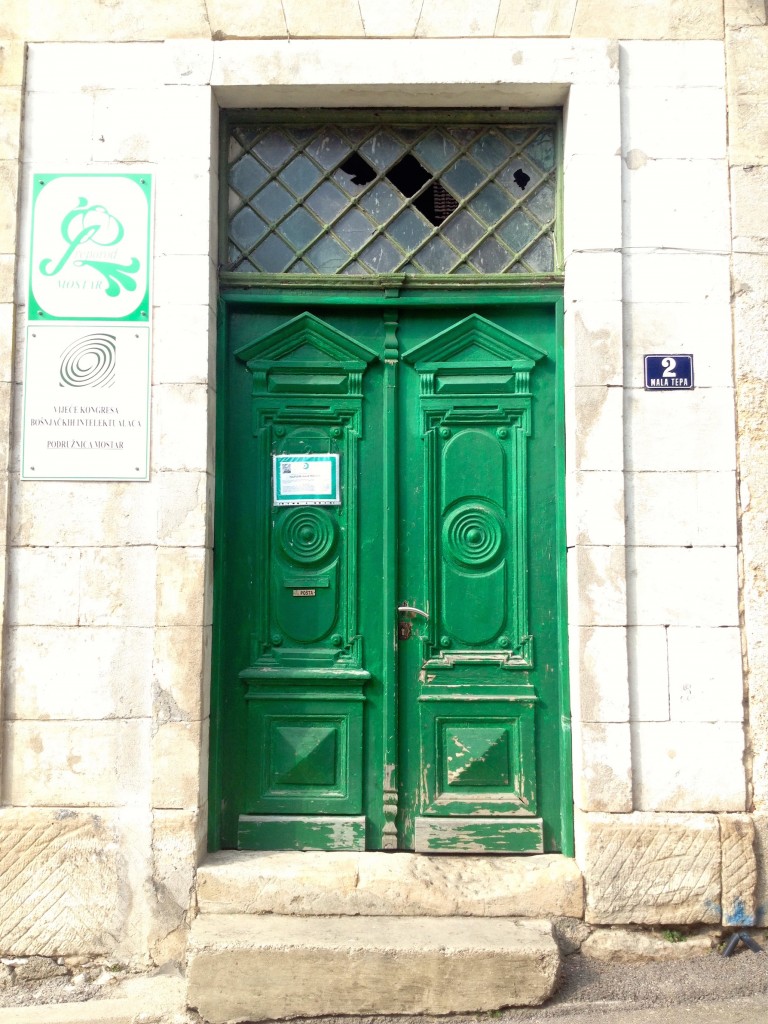
My love of doors continues. Sometimes wear and tear makes a door even more beautiful. There is so much to look at in Mostar, it is overwhelming.
Our destination was the small city of Mostar, a beautiful little town that still has plenty of very visible scars from the terrible war of the 1990s. I’ve never been somewhere where the scars from a war were still so raw. Buildings were pockmarked from bullets, some high rises still had gaping mortar blast holes, and ruined abandoned buildings seemed to be around every corner.
On our Day Trip from Split to Mostar, we learned a lot about the war, enjoyed some good food, and learned a thing or two about how people from different cultural and religious backgrounds live together peacefully now in Bosnia.
I hope you enjoy seeing Mostar through our eyes! Happy travels, friends.
Lessons on War
Mostar has been a very diverse city for hundreds of years, dating all the way back to the Ottoman occupation which brought a strong Muslim influence to the area. Leading up to the war in the 1990s, Mostar was home to three main ethnic groups: the “Bosniaks”, the “Croats”, and the Serbs. Bosniaks practice Islam while the Croats are Catholic, but both groups have mostly Slavic ancestors.
For years and years, Mostar took pride in the fact that these three ethnic groups lived together peacefully in their beautiful city. In fact, Mostar had one of the highest rates of mixed-ethnicity marriages in all of Bosnia and Herzegovina. Before the war in the 1990s, Mostar was about 35% Bosniak, 34% Croat, and 19% Serbs, and everyone lived in harmony.
Then everything fell apart. In April of 1992, Bosnia & Herzegovina declared its independence from Yugoslavia, which threw the country into chaos. The Yugoslav People’s Army, mainly dominated by Serbs, moved to take control of Mostar and began occupying the mostly-Bosniak East side of the city. Bosniaks and Croats took refuge together on the West side. A few weeks later, when the Serb forces withdrew from Mostar, some extreme factions started gathering up the Serbs left in town, torturing and murdering them.
Most Bosniaks moved back to the East side of town, while many of the Croats stayed in the West, sometimes even moving into apartments that used to house Serbs. A tentative calm fell over the city until May 1993, when the Croat military began bombing the city. Any Bosniaks left on the West side of the Neretva river were forced to move to the East side. Bosniak men were sent away and forced to work in concentration camps. The Bosniaks left in Mostar were forcibly confined in what amounted to a ghetto on the east side of the river.
In a City that previously saw past a person’s ethnicity, it was a drastic change to this place where neighbors were fighting neighbors, friends against friends, even cousins against cousins. Families were torn apart. The Mostar siege of 1993 and 1994 was terrible, and at times strange. The Croats laid heavy siege to the Bosniak side of town, sometimes blaring annoying music and propaganda speeches from loudspeakers. Bosniaks avoided venturing out during the day time, and were in constant fear of sniper fire. If people were killed on the street, their bodies were sometimes left to rot for months for fear that someone would be killed if they tried to recover them.
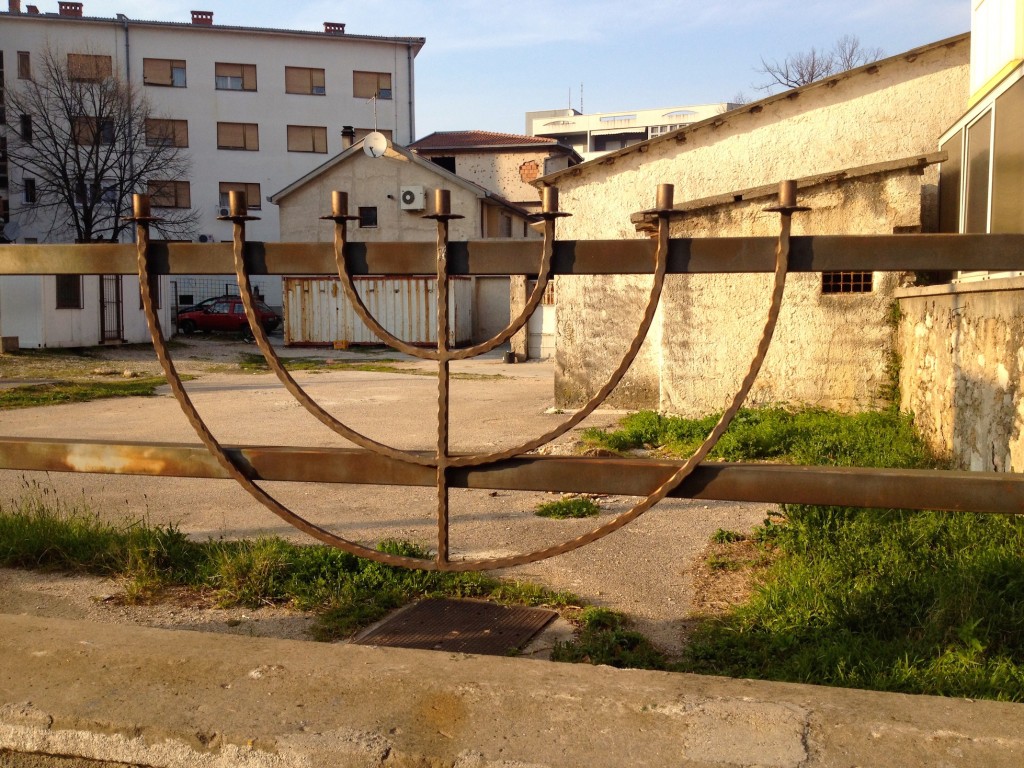
This fence marks the site that the city donated to Mostar’s Jewish families so they could build a Synagogue. The land was donated in recognition of the courageous work they did during the war as aid workers and intermediaries between the Croats and Bosniaks.
Nowhere in Mostar is damage from the war more evident than the East side of the Neretva river. We wandered past a park-turned-cemetery called the New Muslim Cemetery, where every grave holds someone who was killed during the siege in the 90s. The park was covered by trees, so it was relatively safe to venture out at night-time to bury soldiers and civilians killed by shells or sniper fire.
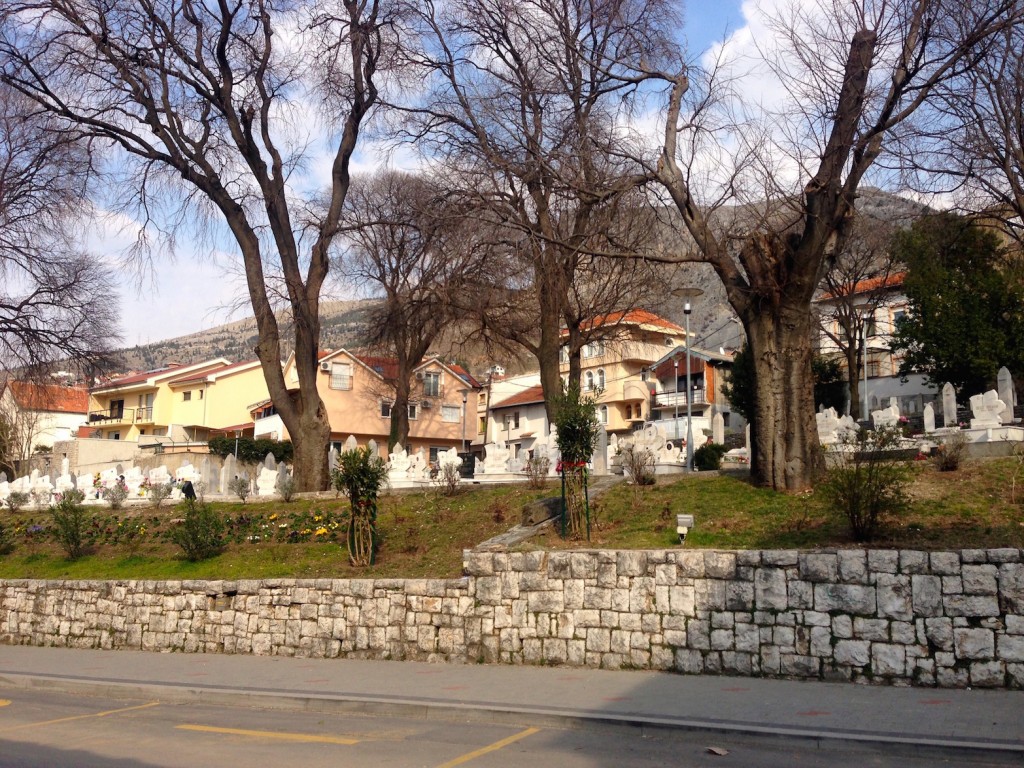
The New Muslim Cemetery, which used to be a park, now holds graves of soldiers and civilians killed in the war.
On the Bosniak side of Mostar, we wandered past abandoned buildings pockmarked with holes from bullets. It’s hard to believe the war ended 20 years ago when there are still so many visible scars on buildings. Just uphill from the New Muslim Cemetery stood this abandoned structure:
- See the hole in the roofline from a mortar?
- The abandoned building. You can see pockmarks from gunfire.
Further North, we ventured through the town’s hopping cafe scene where lots of young people were out smoking and drinking coffees. Looming high above the cafes was a building that had huge mortar holes in it. Seeing it was like getting kicked in the stomach; it just takes your breath away.
Why is there so much damage on the Bosniak side of the river? We learned that there are still so many ruins standing here because of some confusion over who owns what building. The Yugo Bank held mortgages on many of these properties before it went out of business, and no one wants to invest in any construction on these buildings until clear ownership is established. Until ownership gets figured out, many abandoned structures with giant mortar holes gouged in their walls tower above the coffee shops in this side of Mostar.
The juxtaposition of new buildings against old, condemned ones is enough to give a tourist whiplash. Here’s a new construction next to a building that needs demolished:
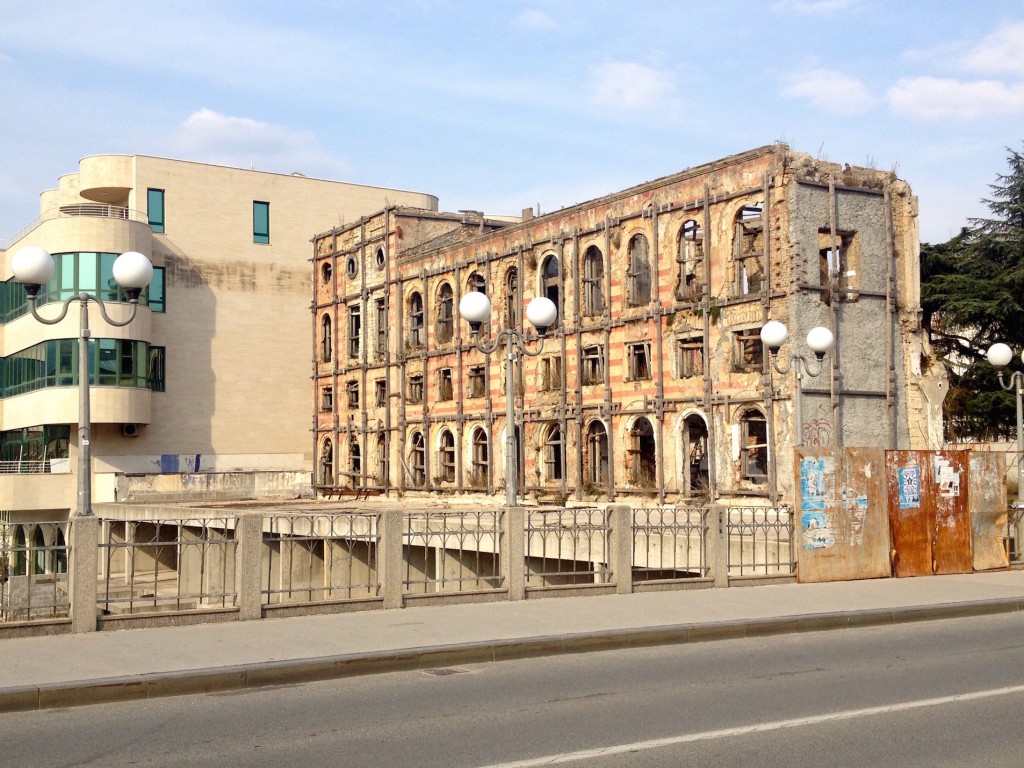
This building would’ve been on the front lines of the war. It sits right up against the Neretva River.
It’s hard to wrap your head around what the people of Mostar have been through. But they are rebuilding. New Mosques have been rebuilt all over the city:
- Koski Mehmet-Pasha Mosque.
- A door inside Koski Mehmet-Pasha Mosque’s Courtyard.
- Karadozbeg Mosque.
A new Catholic Church named the Franciscan Church of Saints Peter and Paul was built in 1997:
It feels like Mostar is slowly healing from the awful year in the 1990s, putting itself back together again.
Mostar’s Famous “Old Bridge”
In spite of the terrible scars left in Mostar from the war, it is still a beautiful city. It’s situated in the gorgeous green Neretva river valley, surrounded by mountains. No landmark in Mostar is more beautiful or more loved by the city’s residents than the Old Bridge, spanning the Neretva river. Because the East side of Mostar is predominantly Muslim “Bosniak”, and the west side is mostly the Catholic “Croats”, the bridge is considered to be a powerful symbol of the point where East meets West, a metaphor that very different cultures and religions can live in peace together.
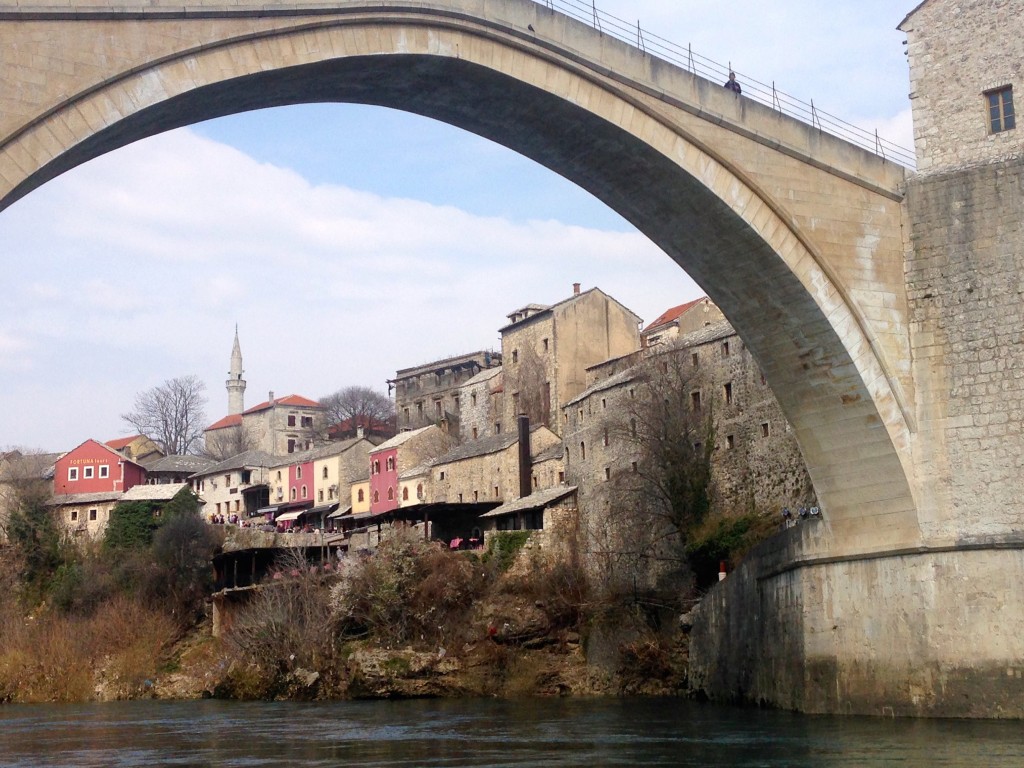
The view under the bridge to the cute row of shops on the East side of the river known as Coppersmiths’ Street. It gets its name from the many vendors who sell hammered-copper decorations. You can also buy old things from the Yugoslav Army, like spent bullet and shell casings.
Sadly, the bridge did not escape the horrors of the war. It was repeatedly caught in the crossfire, then in November of 1993 the bridge was hit directly by a shell and collapsed into the Neretva river below. The river turned red after the collapse because of the color of the mortar used in between the stones; locals said the bridge was bleeding.
After fighting ended, the bridge was rebuilt exactly the way it was before. The huge project was funded mostly by private donors (costing over $13 million!) and was overseen by UNESCO. They built the bridge using old-fashioned methods (wooden scaffolding and old iron hooks to fasten blocks together), and even went so far as to hand carve blocks from the same exact quarry used for the original bridge.
Finally, in July of 2004, the reconstruction of the Old Bridge was finished and opened to foot traffic once again.
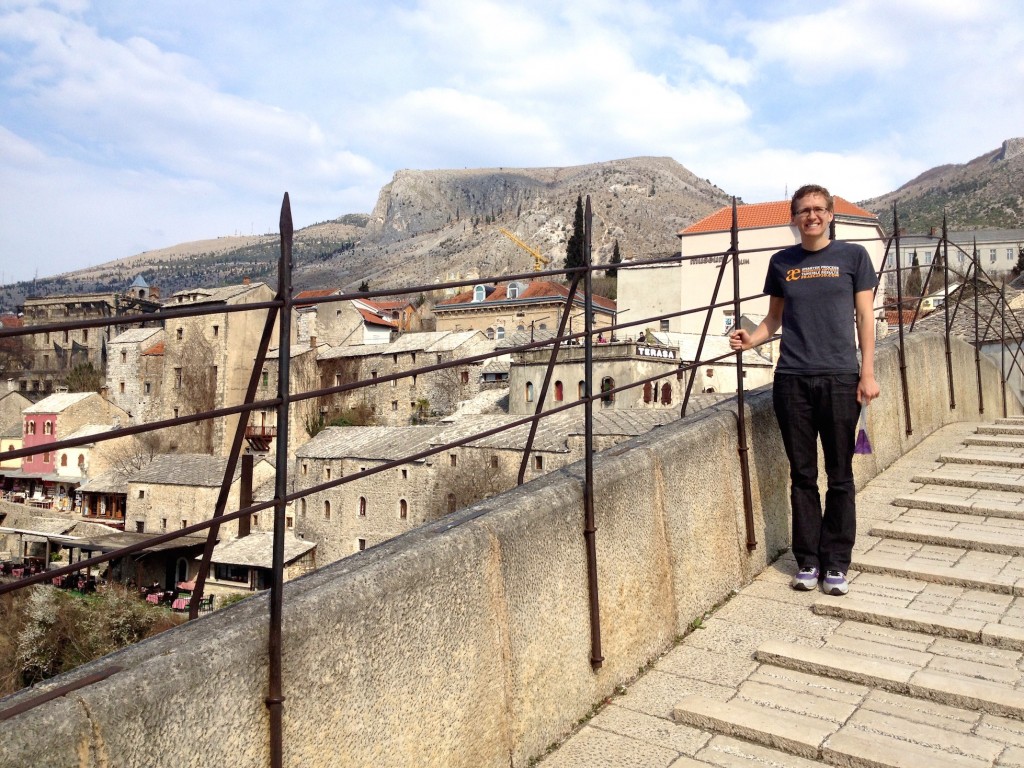
Here’s Kevin on the pedestrian-only bridge. Interestingly, we met a guy on the bridge from Missouri who was currently stationed over here in Sarajevo for the U.S. Army! Small world.
Fun fact: there is a Mostar diver’s club of folks who daringly jump from the bridge into the Neretva river 75 feet below! There was no one diving when we were in town because it was February, but it’s a big thing in the Summertime. Divers will solicit money from passersby until they get about 30 euro, then they’ll make the jump!
Eating and Drinking in Mostar
Hindin Han
By the time we reached Mostar, I was at hunger emergency level Orange. That is near crisis level, and comes with grumpiness, mood swings, and a big fat frown. Luckily, we wandered past Hindin Han, one of Mostar’s top reviewed restaurants. It’s located a very short walk from the Old Bridge and has a fun outdoor deck that looks down on the Neretva River. We lucked out with a warm, sunny February day and sat outside
We ordered a Balkan specialty that we’ve seen on menus in Croatia and Bosnia – Ćevapčići. It’s sort of like kebab, but the minced meat is instead shaped into small sausages then grilled. It was only like $3, but it came with TEN little sausages, all hiding under a delicious somun flatbread. It also came with fries which were sprinkled with what I’m prrrrrretty sure is knock-off Red Robin seasoning. Delicious.
We also ordered the dish recommended by our waiter called Sarajevsko Točendo. It was a veal cutlet stuffed with smoked meat and cheese, covered in a mushroom sauce. Because every steak deserves to be stuffed with cheese and more meat, right?
Bosnian Coffee
When in Bosnia, one must try Bosnian coffee. Sure, it might feel like you’re drinking battery acid. The bitterness of the incredibly strong coffee is only made worse if you oversweeten it with a whole sugar cube.
So what is Bosnian coffee, anyway? Similar to Turkish coffee (though definitely different – never call it Turkish coffee unless you want your barista to hate you), it’s unfiltered and strong. It’s made by pouring hot water over coffee grounds, and is served in a cute metal cup. The metal cup has a handle so you can pour it into your ceramic drinking cup once the grounds start to settle!
If you take your coffee with sugar, you’re supposed to put the sugar cube in your cup before pouring the coffee over it. As a bonus, it usually comes with a piece of Turkish delight!
We didn’t know it came with turkish delight, which is the sweetest thing I’ve ever eaten in my life. Had we known that, we might have skipped the Baklava:
I was so hopped up on sugar and caffeine that I couldn’t stand still! Luckily, Bosnia has a cute little bar known as the…
Black Dog Pub
Nothing helps you come down from a sugar/caffeine induced high like a pint of beer. We wandered over to Black Dog Pub, a little dive bar that serves locally-brewed Mostar beer. We enjoyed a couple beers:
The beers weren’t that great, but you go for the scenery. The pub sits right on the small Radobolja River, with a view of the Crooked Bridge.
The Crooked Bridge is a miniature version of the much bigger Old Bridge. It was supposedly built to practice for the construction of the big bridge! It was damaged in the war, but wasn’t destroyed. It wasn’t until severe flooding in the late 90s that the bridge was destroyed and swept away. So the bridge in the photo above is a newer reconstruction. Hard times for bridges in Mostar.
A Stopover in Počitelj
If you’re driving to Mostar, it’s fun to make a quick stop in the tiny town of Počitelj. Since we were making our day trip in February, Počitelj was nearly deserted, but we hear that it’s a popular stop for tourist buses in the Summer. If it looks crowded, it’s skippable. But if you have the town all to yourself, it’s amazing.
The cute, nearly-vertical town of Počitelj is built right into the hillside. Getting to its most worth-visiting sight, the fortress on the top of the hill, is a bit of a hike up uneven cobblestone paths. Fair warning: these cobblestone paths would be deadly in the rain. We hiked up, passing an old hammam:
The fortress that looms high above Počitelj was built by a Hungarian King in the 15th Century, and used to help push the Ottomans out of the area for a brief time.
There’s not a whole lot to see inside the Fortress – I think it’s used mostly as a hangout spot for teens in Počitelj now. But it’s worth the hike for the gorgeous views of the Neretva river valley.
- We hiked all the way to the top, up a steep staircase with tiny steps. This may not be for everyone.
- The crumbling fortress.
The other sight in Počitelj is its Mosque. Unlike most Mosques in Mostar, this one is free to enter.
How to Get to Mostar from Split
I would never make this trip without renting a car. It’s especially worth it if you’re not a solo traveler. Buses to Mostar run about $17/person each way, so you’re looking at round trip bus fees of almost $70 for two people. The buses also take 3-4 hours depending on the route, while driving takes less than 2.5 hours. If you take a bus to Mostar, it’s not worth making the trip unless you spend the night because it involves 6-8 hours round trip on a bus. If you drive, you can leave in the morning, have lunch in Mostar, and easily be back in Split in time for dinner.
We rented our car (an automatic) from Oryx. We recommend them because they don’t charge a fee to take the car across the border into another country. Many companies really ding you for this! Their rates were the lowest we could find; we booked directly through them, not a third-party website like Priceline/Expedia.
Here’s how our rental car costs broke down:
| Cost (USD) | |
|---|---|
| Compact Automatic Car with full insurance coverage | $48/day* |
| Gas | $30 |
| Toll Roads | $15 |
| Parking in Mostar | $5 |
| Grand Total | $98 |
*Manual cars are MUCH cheaper!
Ok, so we clearly spent a little more than the bus fees would’ve cost us, but we saved $25 by not staying in a hotel. Also, we rented the car for a second day (extra $48 plus $12 more dollars in gas) to visit nearby Krka national park. It’s damn near impossible to bus to Krka, especially in the winter. Save yourself some heartache and just rent a car while you’re in Croatia. Better yet, learn to drive a stick shift on hills before coming over. If you can parallel park a manual on a hill, you can handle Croatia and it’ll save you a ton of cash.
Traveler Tip: You’re legally required to have an International Driver’s License to drive in Bosnia. (There is currently no requirement for one in Croatia.) It’s easy to get an International License, just contact AAA to obtain one, it only costs $15. We did not have an International Driver’s License, which prrrrrobably would’ve been bad news if we’d been in an accident or had trouble at the border crossing.
We Want to Hear From You!
Have you visited any cities that have been through a major war? Which ones? I remember watching footage of the war in Bosnia in Middle School. Did walking around a place you had seen so much on the news seem as surreal to you as Mostar did to us?
